Roman art final
1/174
There's no tags or description
Looks like no tags are added yet.
Name | Mastery | Learn | Test | Matching | Spaced |
|---|
No study sessions yet.
175 Terms
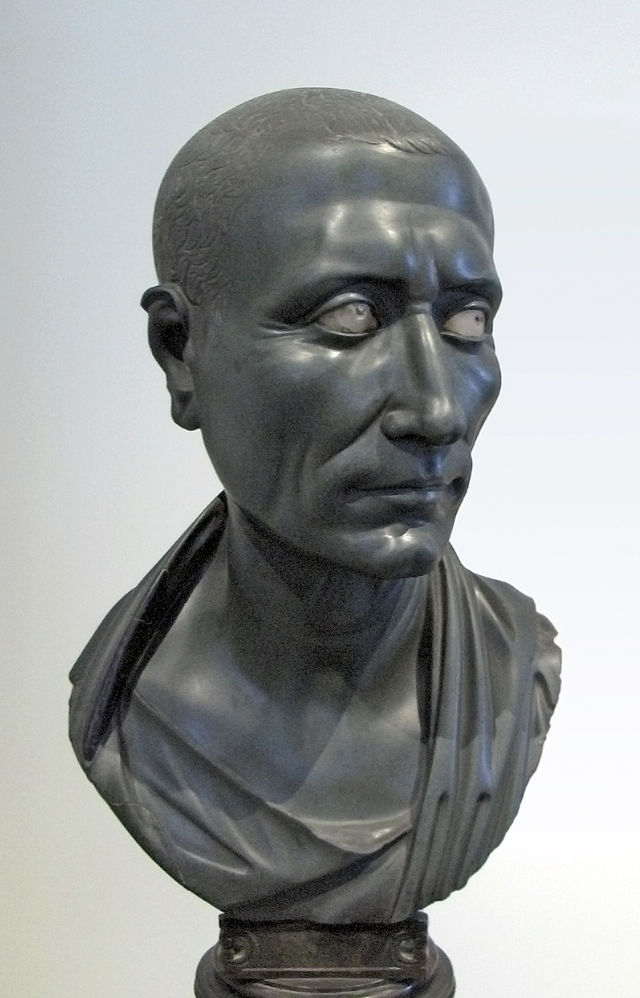
“Green Caesar” (Altes Antikensammlung Berlin) 41 cm, green slate, 1st c. BC
-differing from Pompeyus
-steering away from verism like alexander
-trying to show realism of himself

Denarius of Caesar ca 47-46 BC
-Shows aeneas, a survivor of the trojan side of trojan war, who brings his family with him
-goes down a long, tortured journey to get to where the gods want him
-started the Julio family line
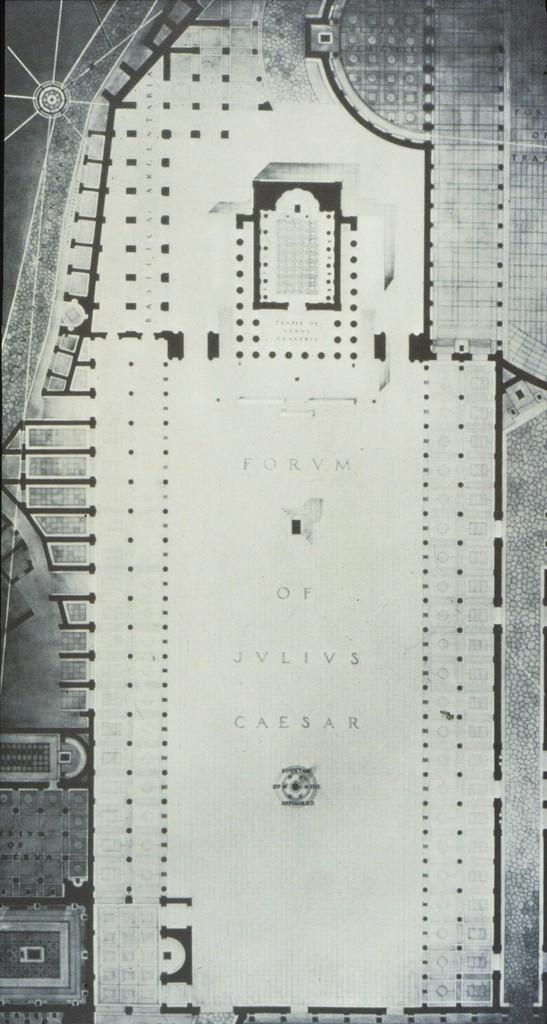
Rome-Forum of Julius Caesar 46 BC
-has an image of Venus Genetrix, Aeneas’s mother, who started the julio line
-Caesar wants people to know his power
divi filius
-Caesar divi filius (“caesar, son of the god”)
-Ocatvian wants people to know his relationship with Caesar
-Ocatvian has caesar declared divine

Denarius of Octavius 41 BC
Caesar’s death
-Octavian needs to demonstrate authority

“Octavian” Type (ca 35-29 BC)
-No longer in morning
-cloak of a military commander
-looking away
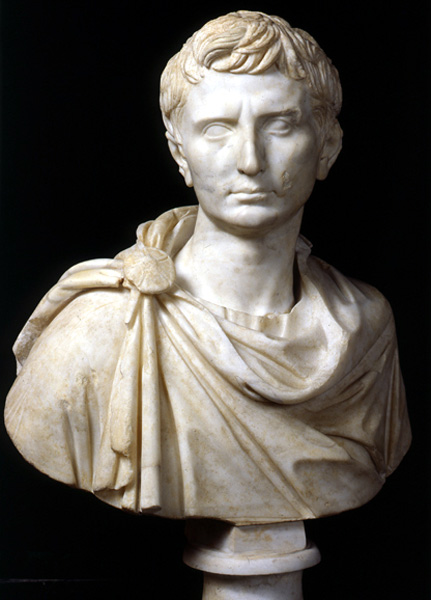
-Actium type
-still in commander type
-Octavian beats anthony and cleopatra showing him as strong to better is reputation
-has a little crab-claw lock of hair in order for people to tell it is him
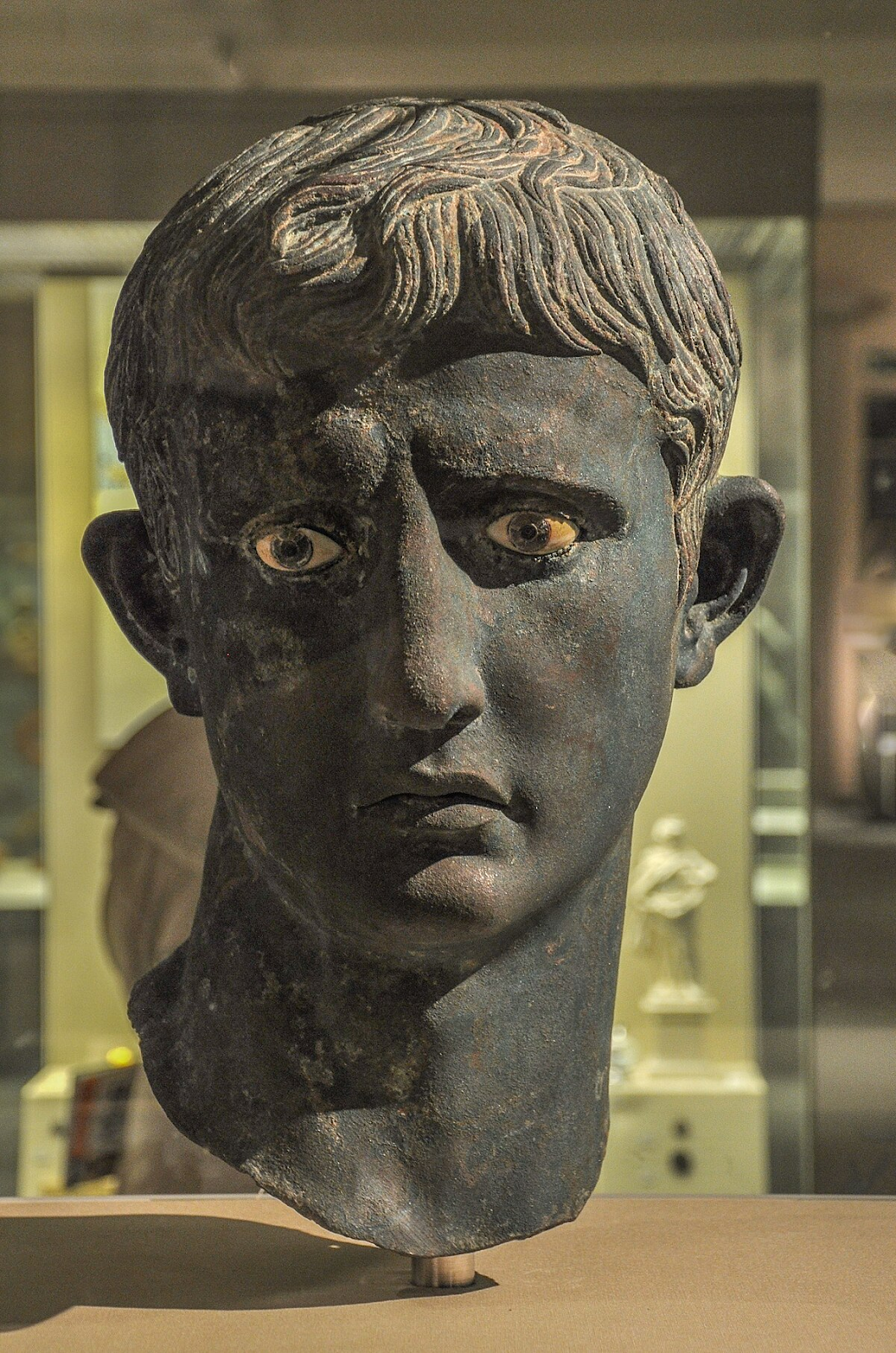
Meroe Augustus (27-25 BC)
-lines up when Octavian is becoming Augustus
-When Octavian declared Rome is restored
-This will remain his image for as long as people produce images of Agustus
-uses an idealizing style which ignores the hellenistic period
-gets inspiration from the classical period
-classicism wants a perfect reality: built on an eternal youthful state
-Augustus believes that Apollo is his personal friend (Apollo is forever youthful which makes Augustus seem more normal for being young and sickly)
head on front, shield with stick and bird on back)
Recovery of the Parthian Standards (20 BC)
-Signis receipts (denarius minted 19 BC)
-saying Augustus is a manly man
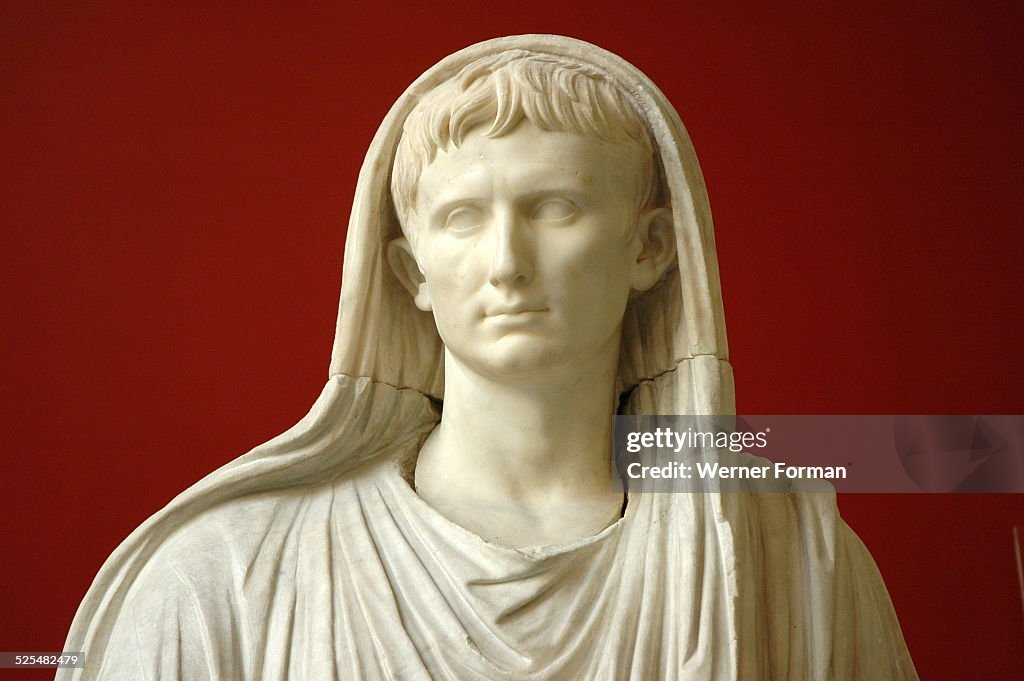
Via Labicana Augustus (after 12 BC)
-primus inter pares (the first among equals) (he is the first but other are equal)
-wants to show he is powerful, but also wants to seem modest
-capite velato: prepared for sacrifice
-modesty ties in nicely with his youngness
pontifex maximus: Augustus has achieved top ranking priest hood
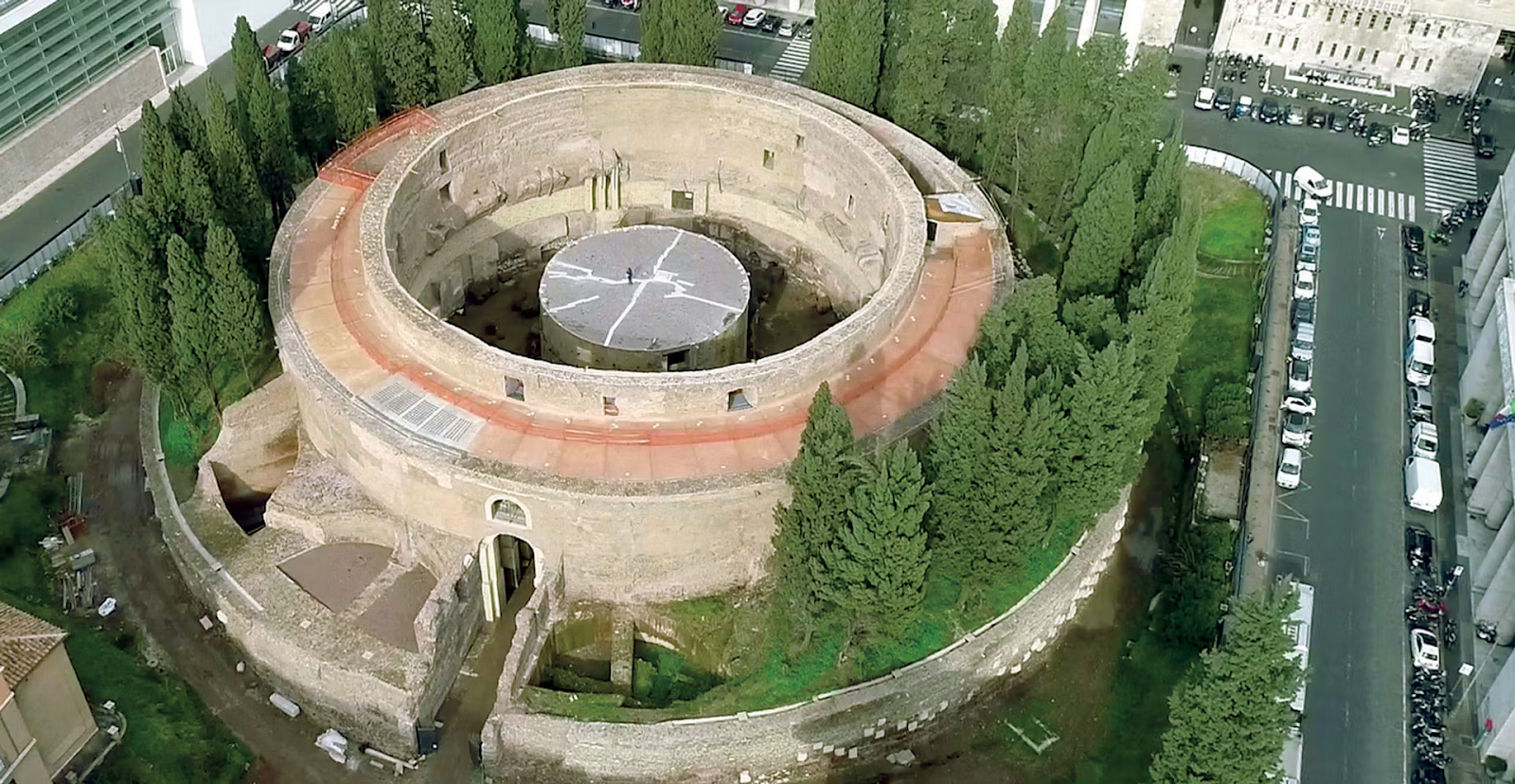
Mausoleum of Augustus (32-28 BC)
-dyanistic
-outside of city center
-integrate various spaces into a large complex for a political effect
-speaks on collective roman identity but mainly a constructed world view with Augustus as the ruler
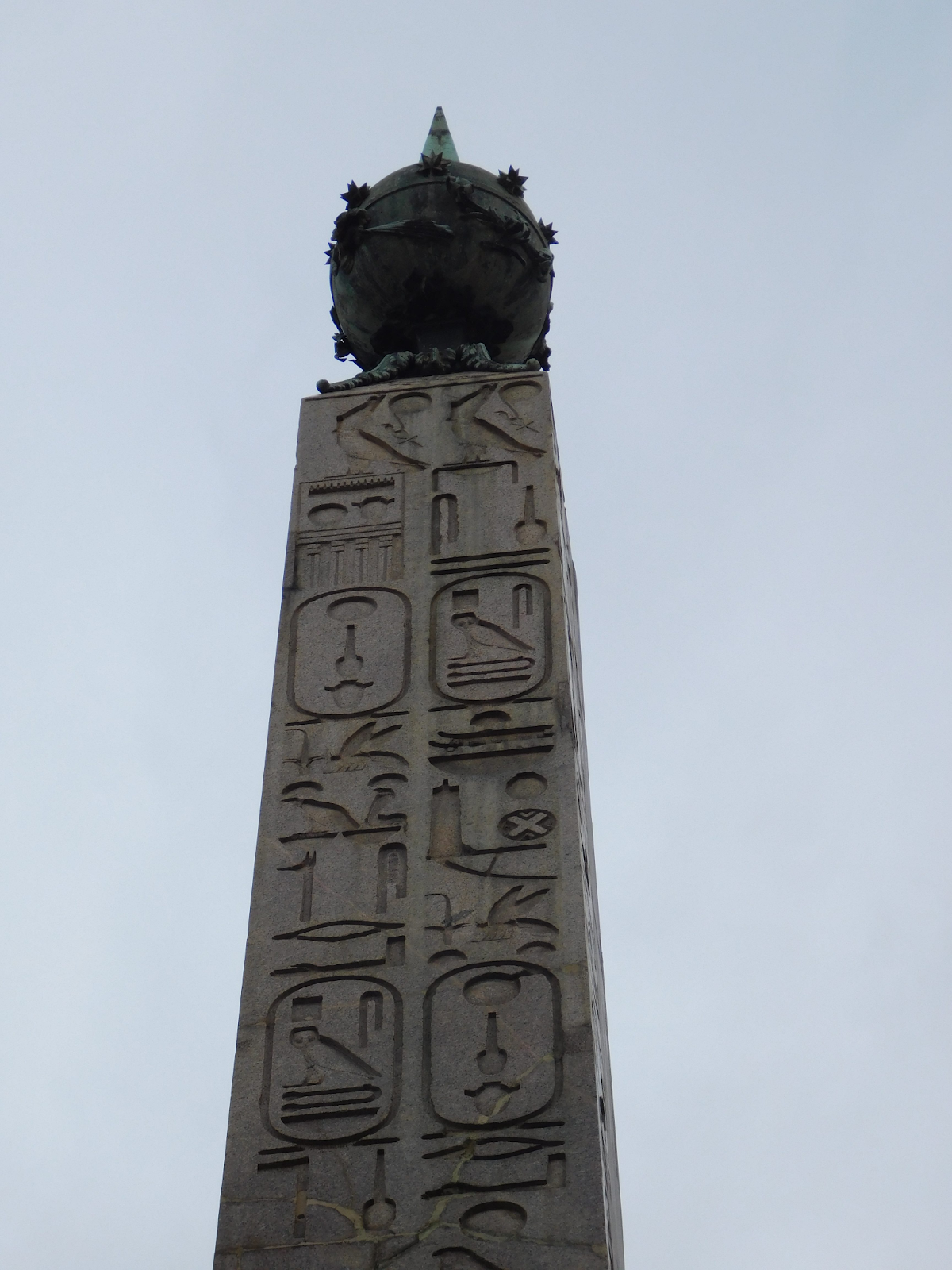
Horologium of Augustus 10 BC
-A sundial
-imperial worldview statement showing monumentality and importance of julio-claudian line

Ara Pacis Augustae 13-9 BC, Rome
-shows that Augustus has brought peace back to the roman world
-public blood rituals
-surrounded by screen which carries friezes that tell the story of Augustus and his family
-use death to display events of your life
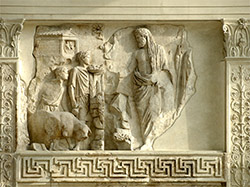
the Aeneas portrait in Ara Pacis Augustae 13-9 BC
-bearded figure has capite velato meaning he is ready for sacrifice
-wearing a toga which means he is a roman citizen
-a heroic drapery of toga
-on the left they are bringing objects for sacrifice
-the convergent lines all point the the right man so he is the most important
-a historic statement about the julio family line with Aeneas
-Shows that Aeneas is a person who can be counted on to show his duty
-Pius Aeneas (Pietas): does their expected duties to gods, state, family (etc) unfailingly, no matter what
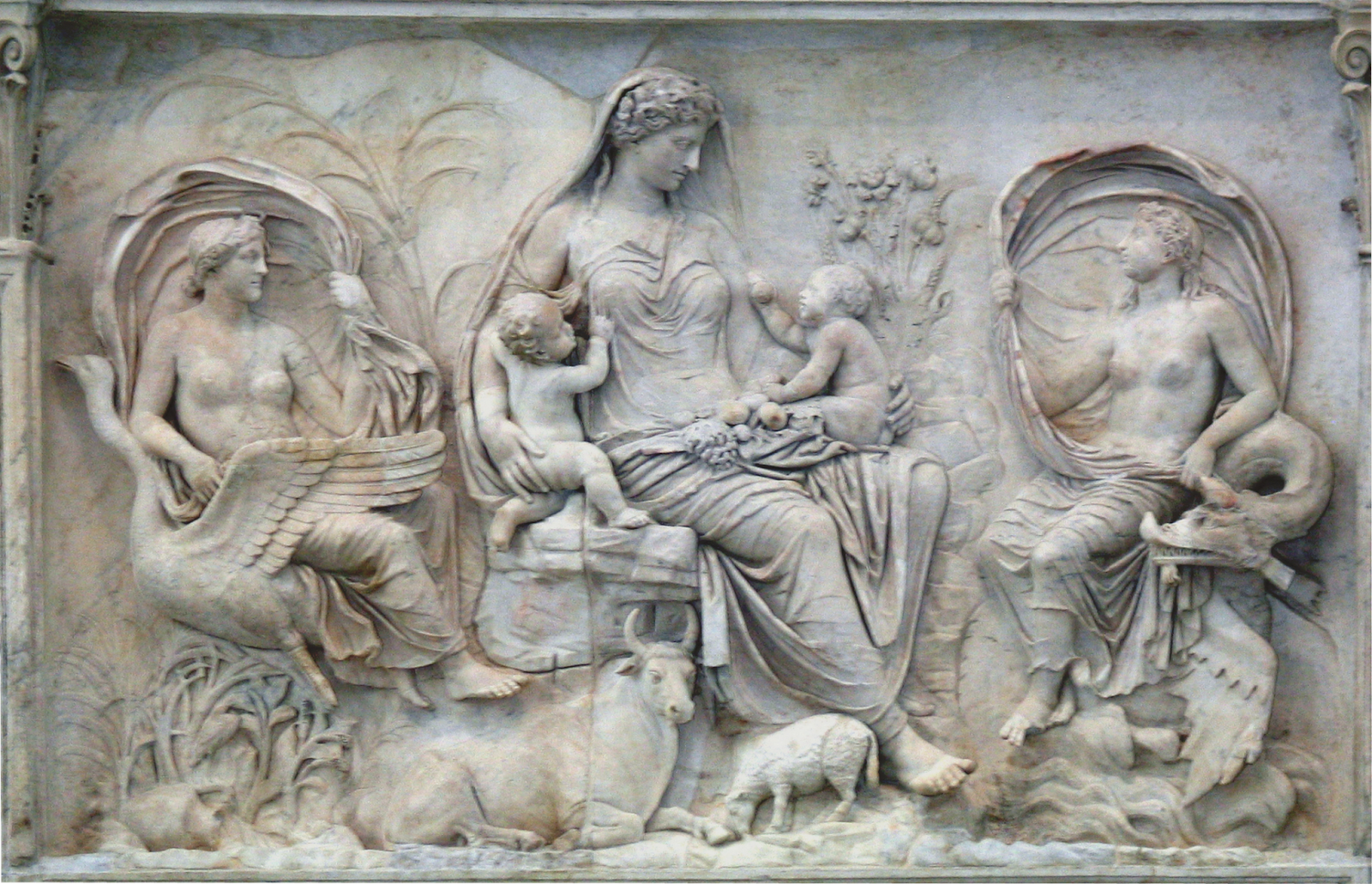
Tellus in Ara Pacis Augustae 13-9 BC
-devine female embodiment of the land of italy
-one is seated on goose: land breeze because of flowing drapery
-one is seated on sea monster: sea breeze
-fertility, abundance, successful reproduction
Close to the notion of peace which is what the altar is dedicated to
--The ara Pacis focuses on that peace and conflict go hand in hand
-since war is over, fertility can be returned to land
-Agustus doesn’t just win and do a victory celebration, he wins and restores peace to the land permanently
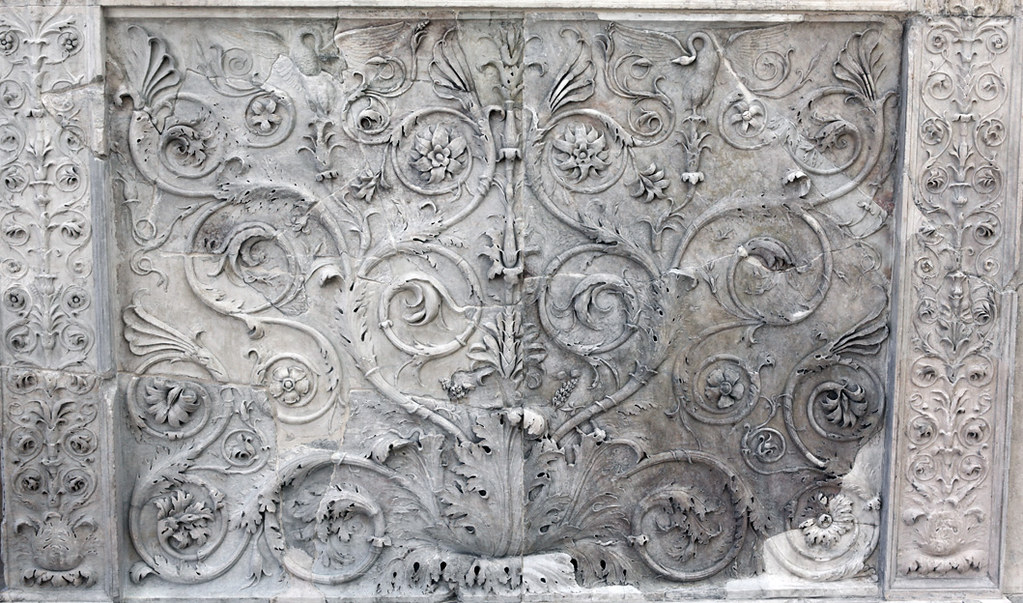
-The botanical frieze throughout the work of Ara Pacis Augustae 13-9 BC
-focuses on fertility, it is very vegetal
-had very bright coloration

Altar of Peace in Ara Pacis Augustae 9 BC
-family matters: Agustus wants everyone to know his family is Rome’s future
M. Vipsanius A Grippa:
In the altar of peace, Augustas’s son in law
-Augustas:
A fixture of convergent lines on him, elevated, all to focus attention on him
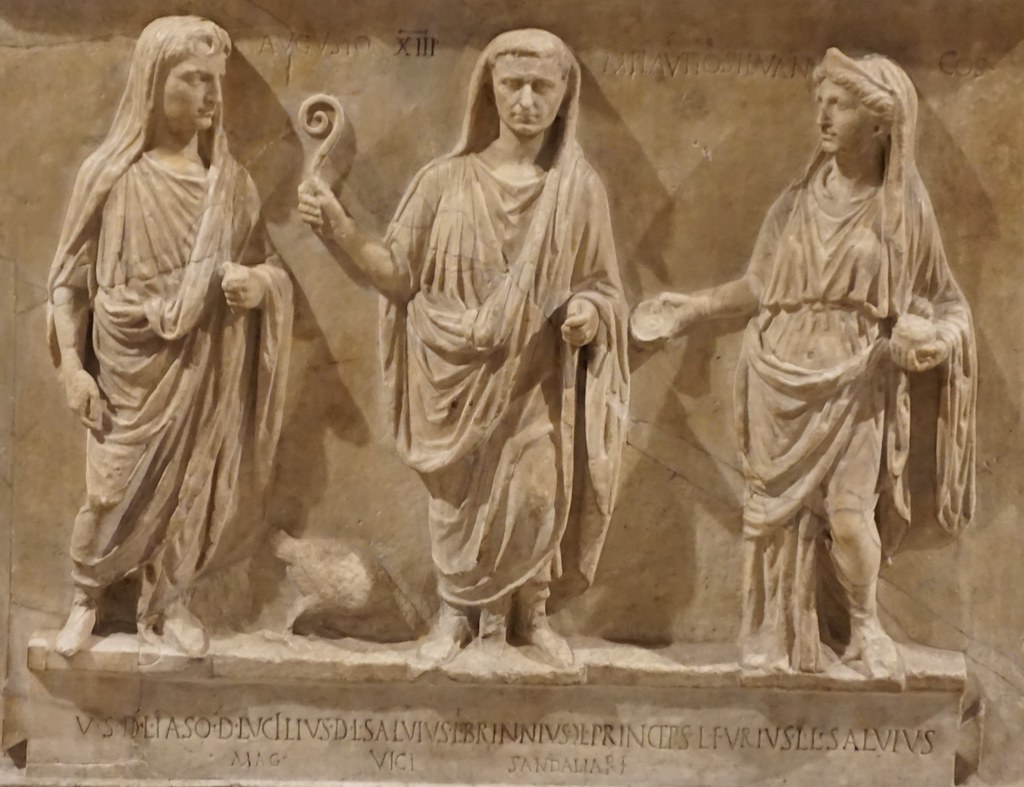
Augustus and the Lares (2 BC Forum of Augustus)
Augustus creates many new neighborhoods and low-level neighborhood administrative
-suggests that there is some success in the state program
-located where streets cross in a neighborhood
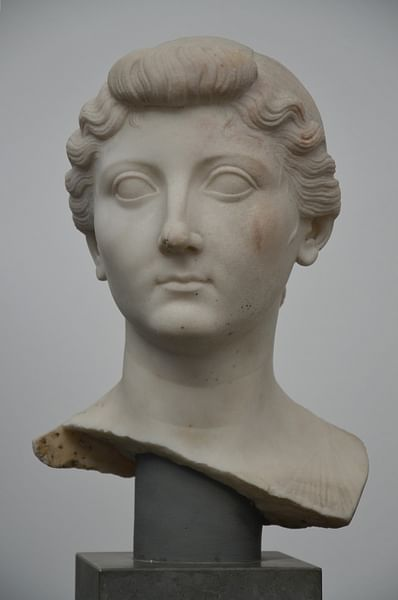
Livia Drusilla (58 BC- AD 29) aka Livia Augusta
Where?
-family should be faithful and reproduce
-propper civic women
-motrona: matron; complimentary term for Roman women
-female head of household with children, has spouse
-Nodus: hairstyle, an image that Roman women want to replicate
-include family members in the way augustas is viewed
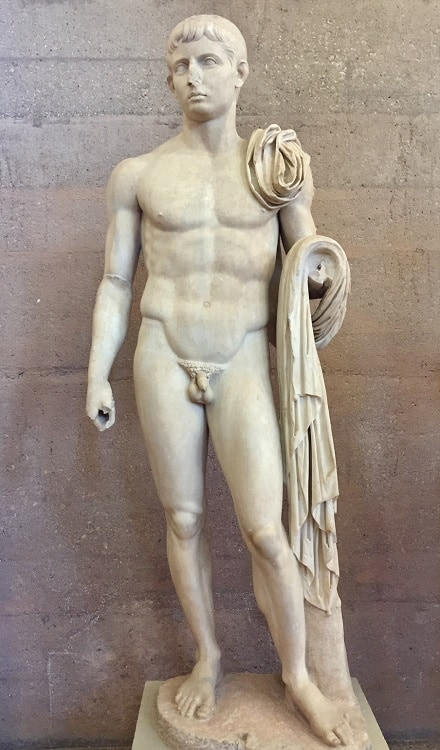
Corinth- Caius Caesar (20 BC- 4 AD)
-Augustus grandson
-Athlete body
-static, ageless, physical perfection
-Similar to Augustus portraits, to connect him to Augustus

Corinth- Lucius Caesar (17 BC - AD 2)
-athletes body
-represented as a twin to Caius
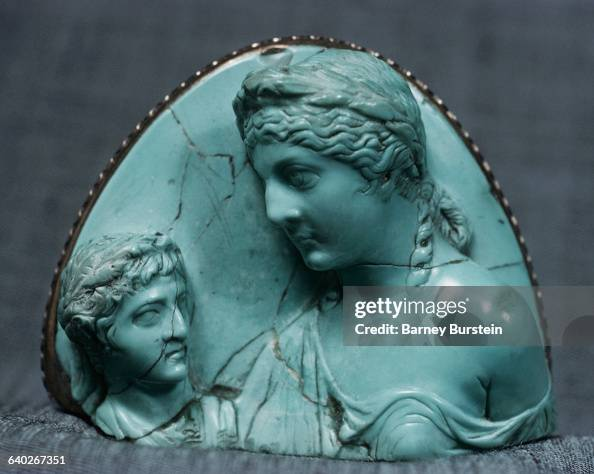
Livia with tiberius
-Tiberius is distempered
-doesn’t really want to rule
-Tiberius has no real relationship with Augustus, making the Julio-claudian line
-not great for the Julio line
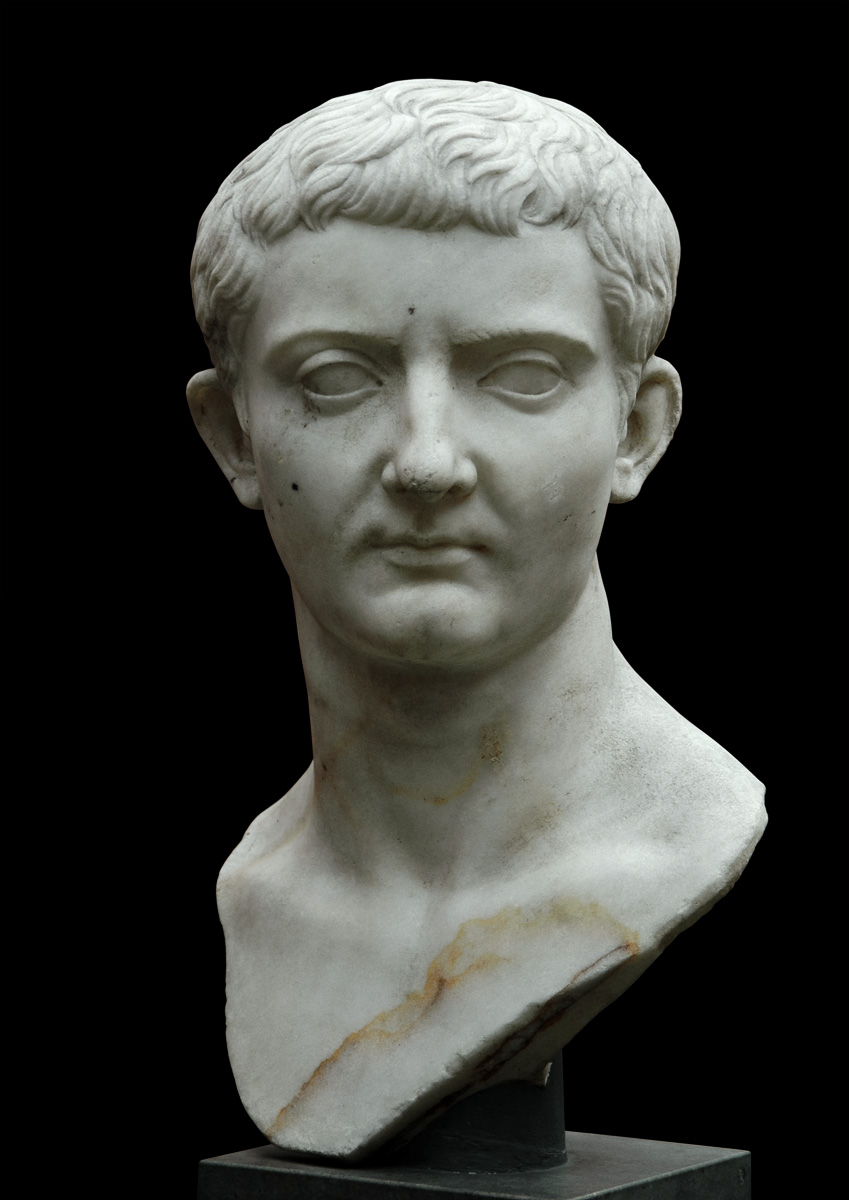
Arsinoe (Fayum) Tiberius: “adoption type” after AD 4 (copenhagen)
-hair less done then augustus
-flat face
-less visually appealing
-pursed mouth- slightly sour face
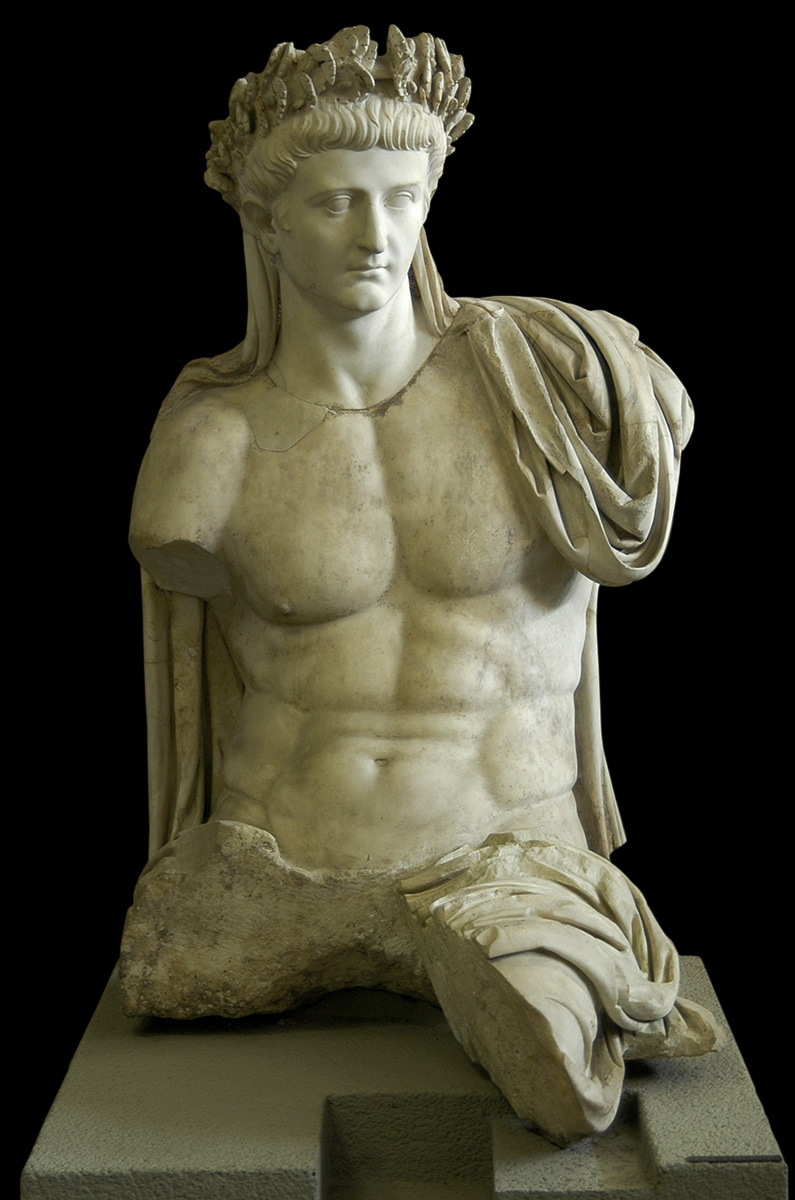
Tiberius: seated statue from Caere; ca AD 25-50
-elites have founded a new theatre building with statues of members of the elite family
-Tiberius doesn’t really care about his image creation, so he has someone else do it
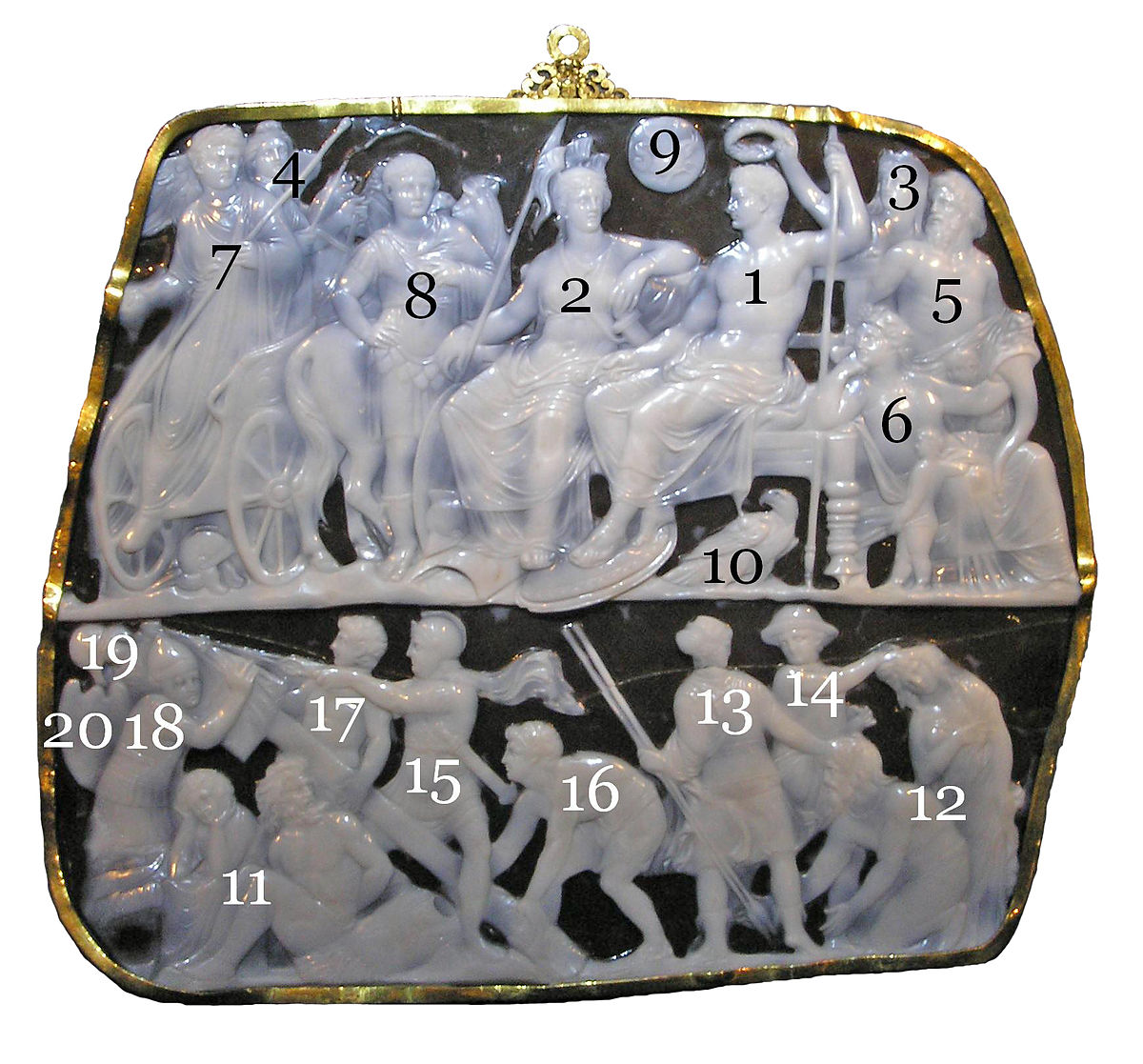
Gemma Augustea (Vienna) dates in the range of AD 10-20
-shows members of the imperial family in the top register
-shows roman army in the world in the bottom register
-1 is augustus: he is the focal point
-9 is the capricorn, augustus’s sign which is how you know it is augustus
-10 is imperial eagle
-Augustus is the center of celestial, surrounded by gods (2 is roma, 6 is italia etc)
-tiberius is 7, he is the bringer of victory (he is in chariot)
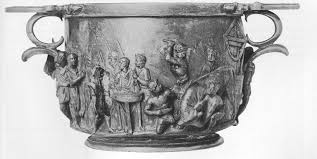
Boscoreale cup II -triumph of Tiberius (ca AD 10-20)
-suggests local elite ownership of the villa, not state imperial
Left shows a triumph parade
-reinforce the ideas the divinity of augustus and the military victories of tiberius
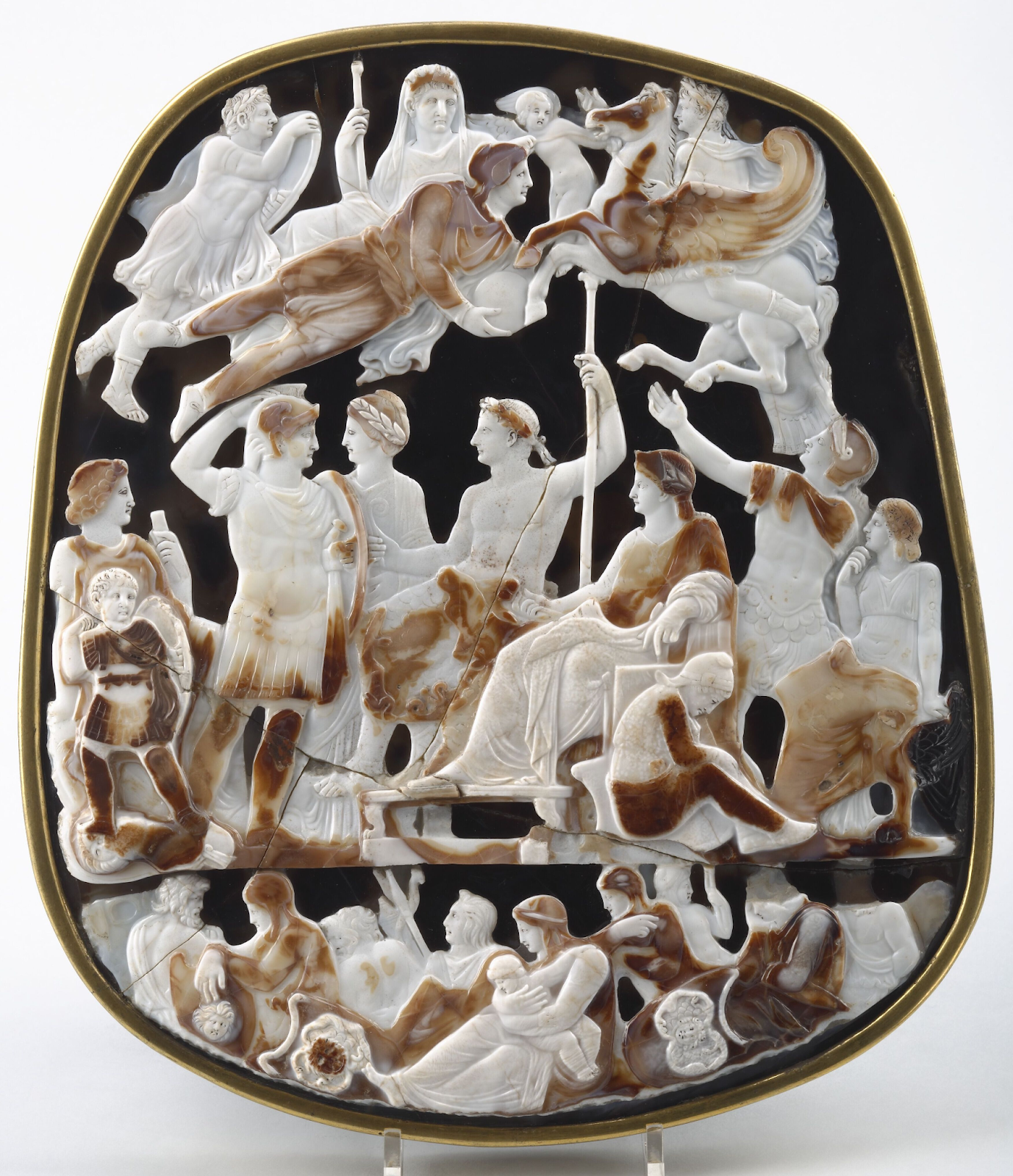
Grand Camee de France AD 23
Cabinet des Medailles
-tells the next stage of the julio-claudian story
-the top register shows celestial
-imperial art is repetitive which is good if you want to display a constructed message
-the state has a key part to play in display authority
-lacks creativity buck instead uses repetition to reinforce to the viewer how important the imperial family is
-a tool of understanding that the viewer gets the message
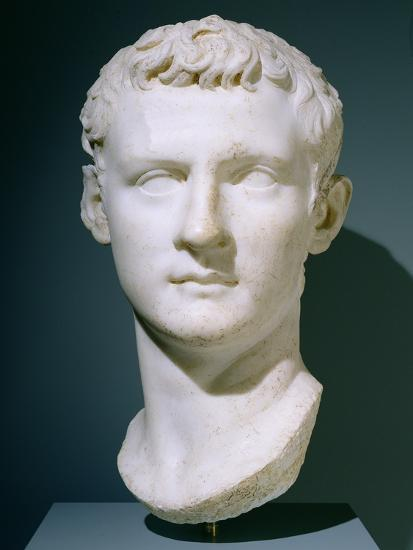
Caius (Caligula) (AD 37-41) (new york)
-take over after tiberius
-insane sex fein
-everyone hates him
-he gets assassinated
-recognizably julio-claudian

Portrait of Caius, from Asia Minor AD 37
-different hair style
-he has a pattern in his hair
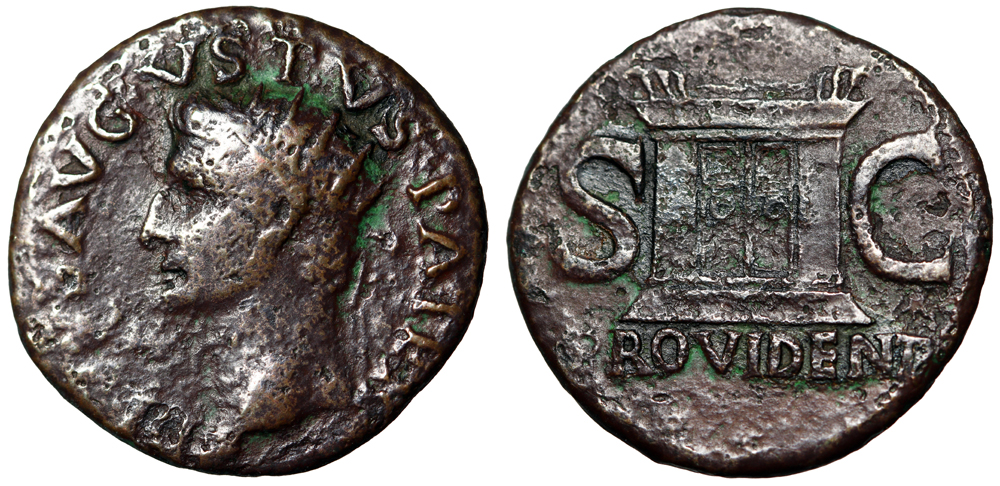
Caius honors Divus Augustus?
-honoring a temple for augustus that caius installed
-caius is a horrible person is he really doing good things
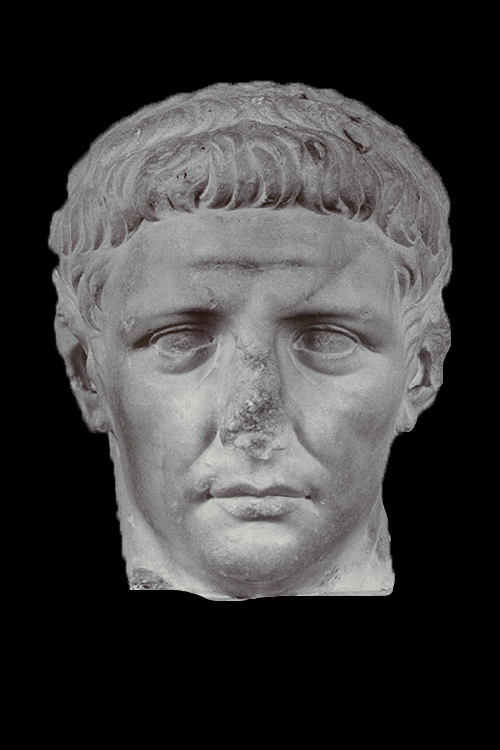
Claudius (ca AD 40-50) not right image
-After caius
-When caius dies claudius is horrified they will kill him to, however they declare him as emperor
-his family thought he was unfit to rule due to physical incapacities
-claudius also has julio-claudian features
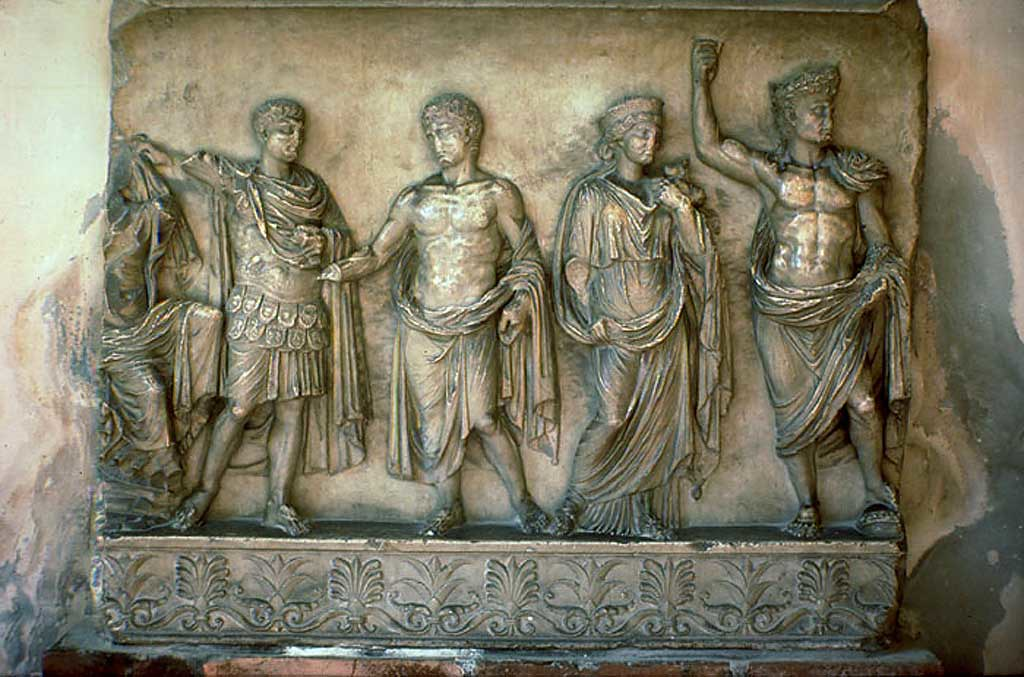
Claudian relief of the imperial family?
-Claudius needs to remind people of his ancestry
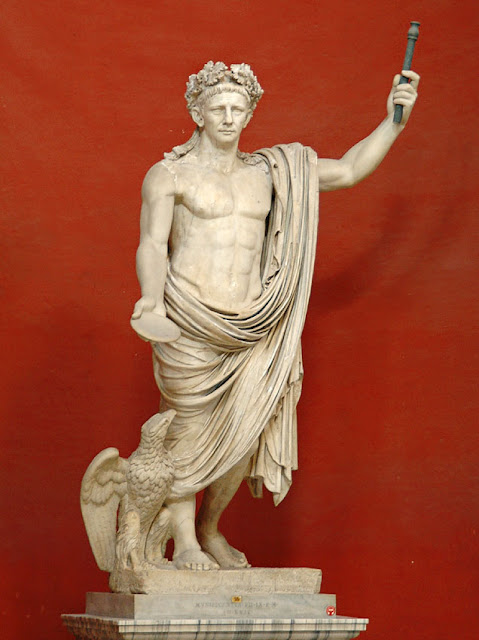
Claudius as jupiter (ca AD 50)
-augustus didn’t want to appear to the god
-suggests shifting attitudes towards people displaying themselves as gods
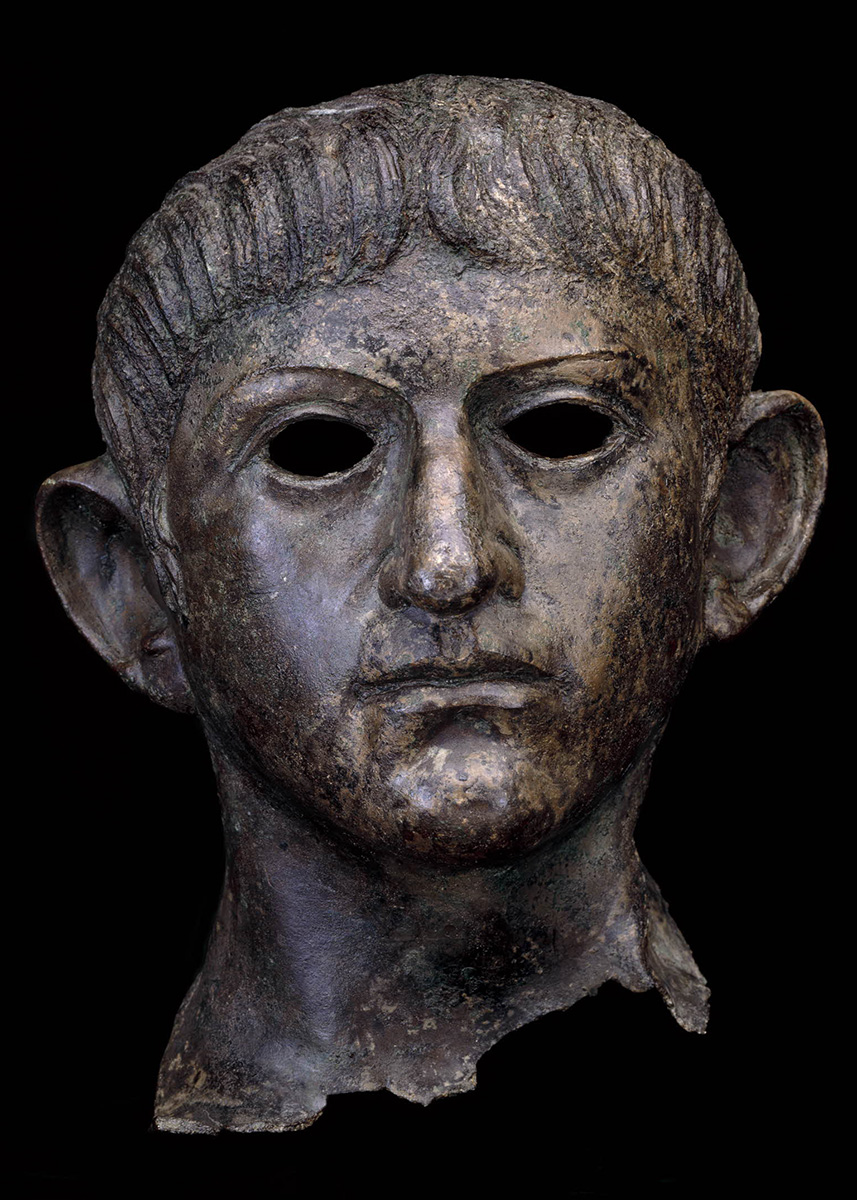
River adle at rendham - copper alloy head of the emperor Nero or Claudius
-shows regional variation of imperial leaders
-ears and hairstyle are julio-claudian which is combined with an abstracted face which will dominate rome for centuries
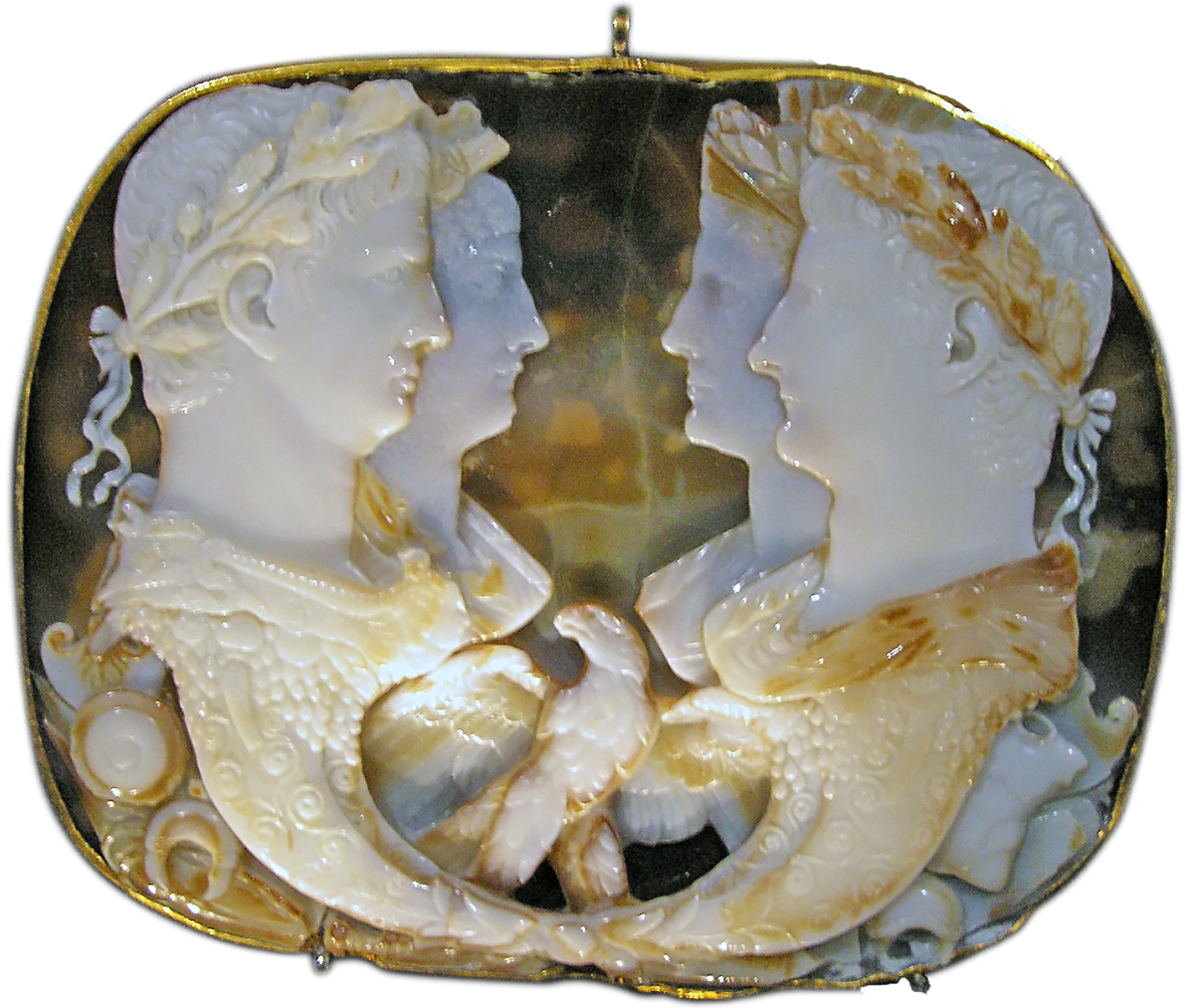
Gemma claudia; AD 49 (vienna)
-represents fertility (cornucopia)
-endorsement of claudius because eagle is facing claudiu

Nero - youth portrait (ca AD 50)
-show Nero as a possible holder of power in youth
-different than Julio-Claudian typography
-entering into adulthood as seen by his drapes

Nero and Agrippina the Younger (AD 54)
-no such thing as joint rule between mother and son but that is what is happening
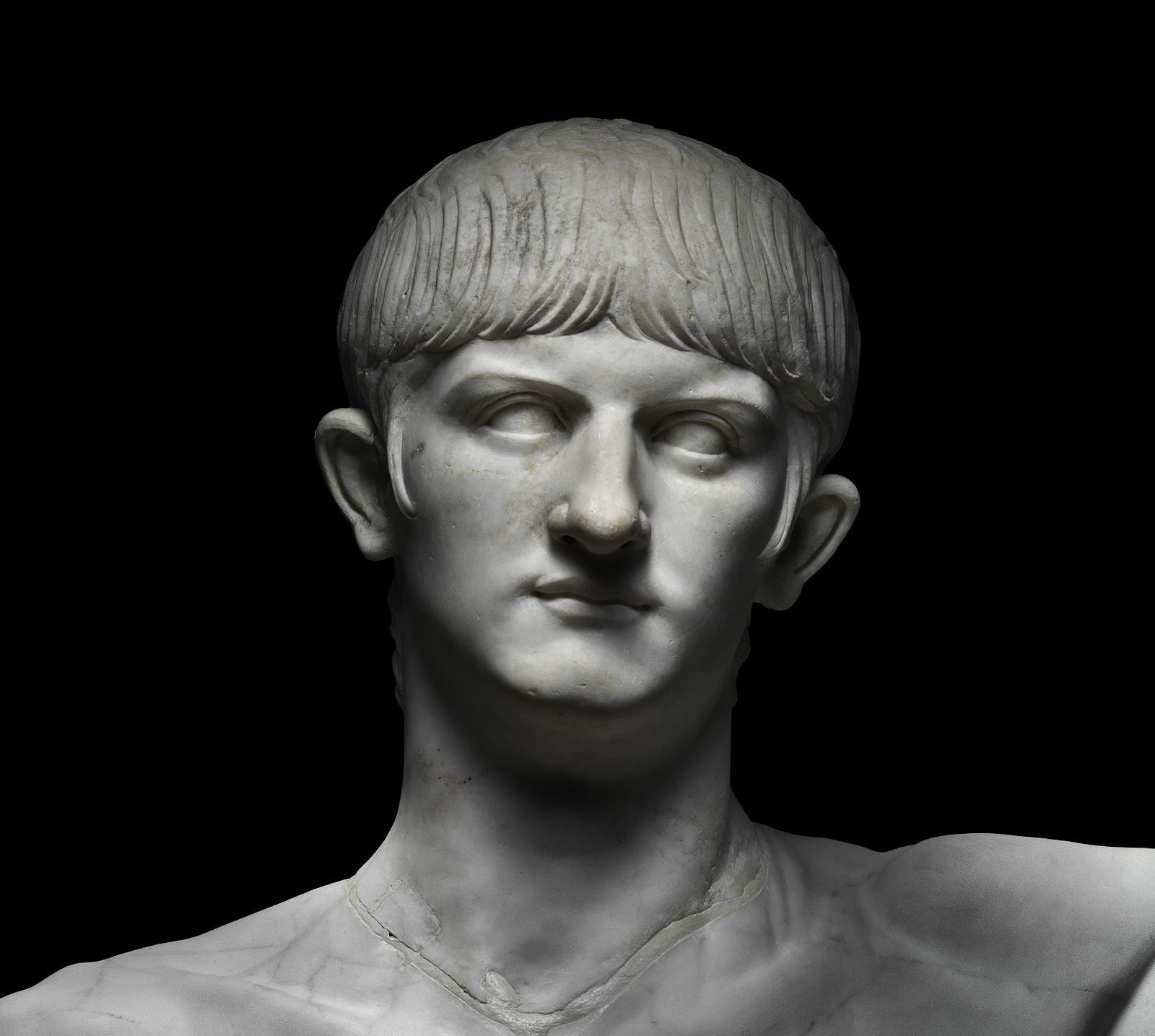
Nero Youth/ accession type (ca AD 55-59) (cagliari)
-chin is very different from julio-claudian type
-shows he is not biologically related
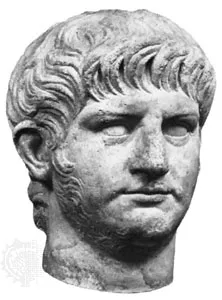
Nero - adult type (after AD 55)
-his face becomes fuller
-hair becomes longer
-not clean shaven
-his locks have a new pattern
-his hair looks like rays- makes you think of divinity
-Nero competes in sacred games (singing) and wins every time
-channeling the god Apollo in a flamboyant way
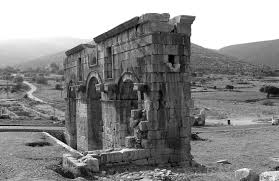
aphrodisias (Caria)- Sebasteion 1st c AD
-monetized by local elites interests
-has columns and on top of which are panels
-elites of the provinces understand the essence of the image program
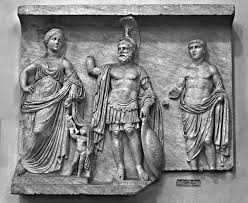
-”Algiers Relief” Forum augustus (2 BC)
-Center is mars, left is Venus, right is caesa
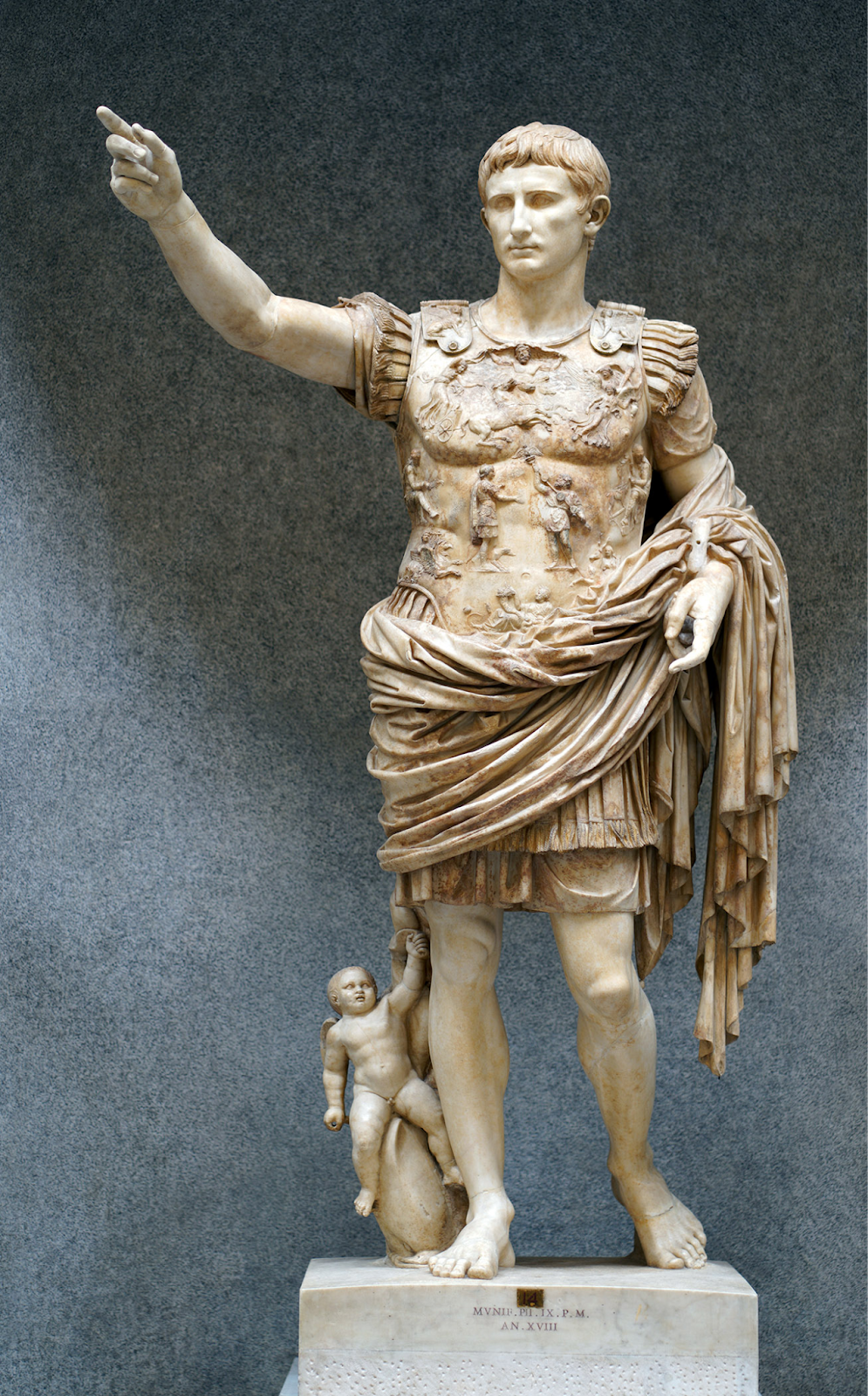
Augustus of Primaporta (after AD 14?)
-demonstrates an unchanging portrait of Augustus (augustus in the beginning)
-private consumption
-head is the meroe type
-Return of the Parthian standards- 20 BC: standards are what he is wearing on his chest to go to war
-diplomatic victory message of augustus getting standards back
-the roman is clean shaving and the Parthian is bearded and wearing pants (pants = barbarian)

Pompeii - Portrait statue of the Priestess Eumachia
-Eumachia built Eumachia complex
-drawing form julio-claudian models
-feminine, motherly
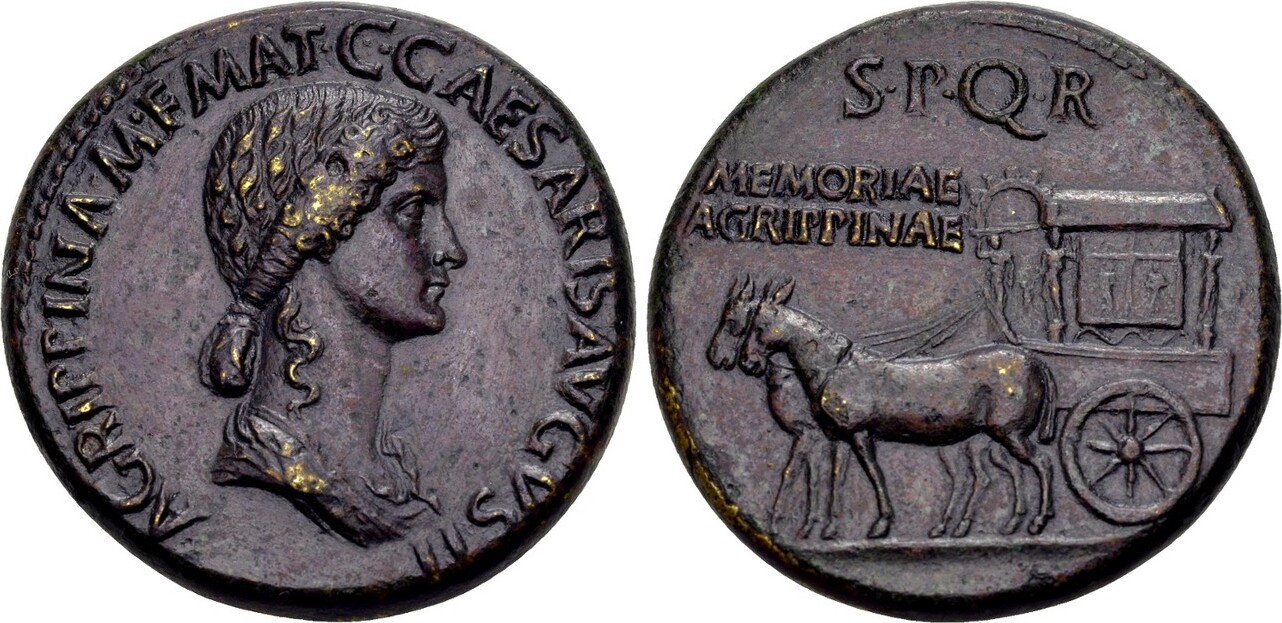
Sestertius with carpentum of Agrippina Maior
-an example for other woman who want to create portraits
-align yourself with the values people want to see
-mainlining a durable official image that will not fade
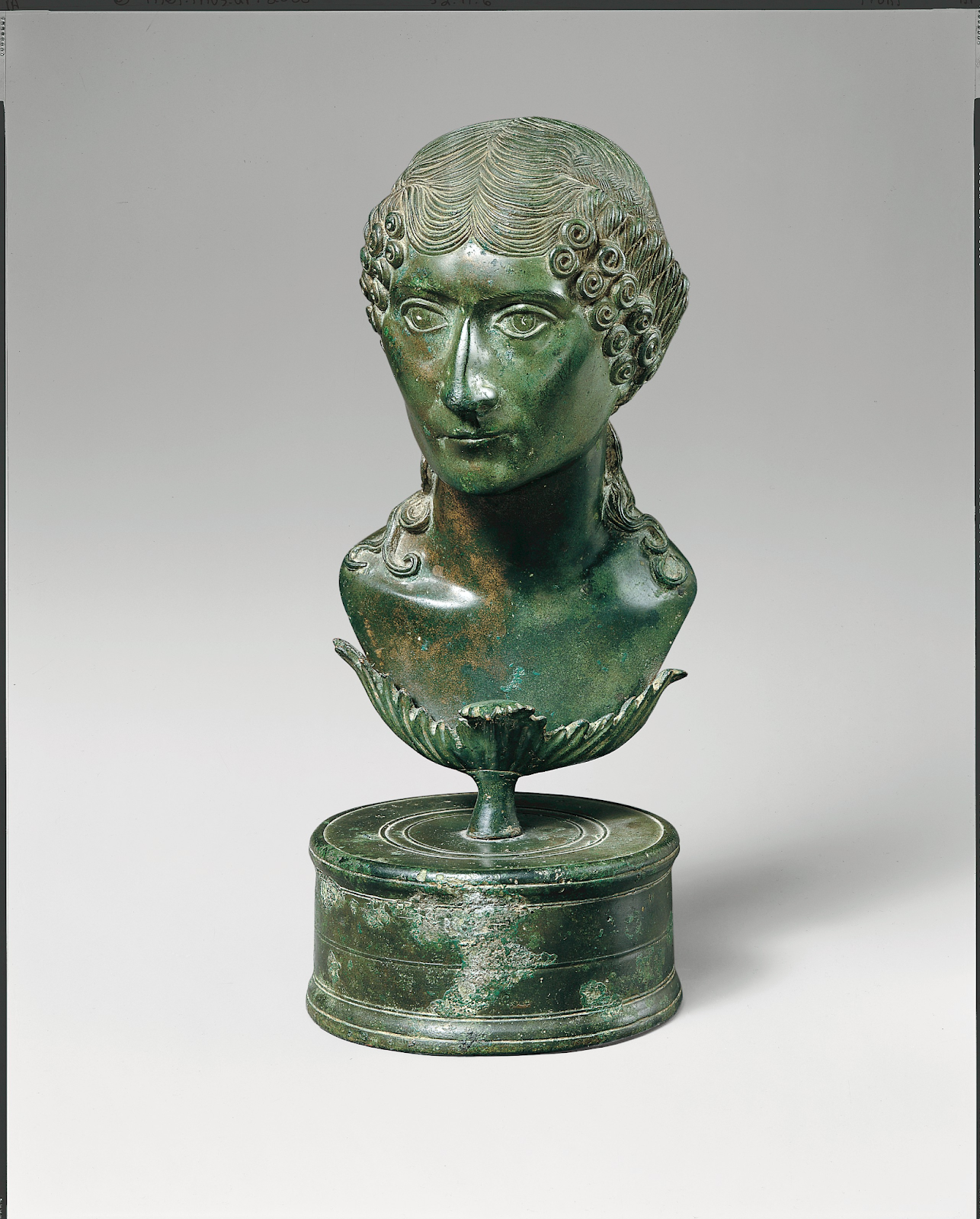
Bust of a matrona in style of Agrippina Maior mid 1st C AD
-mainlining a durable official image that will not fade
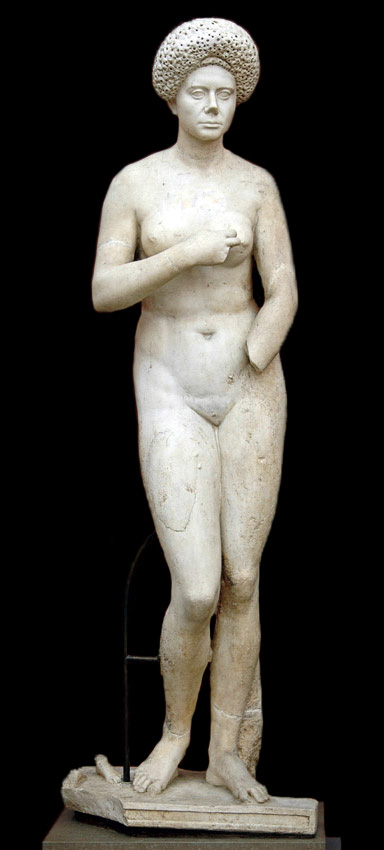
Lake Albano: Marcia Furnilla ca AD 79-81
Different direction than other portraits
-imitation of a very famous portrait of aphrodite
-imitating fame and divinity
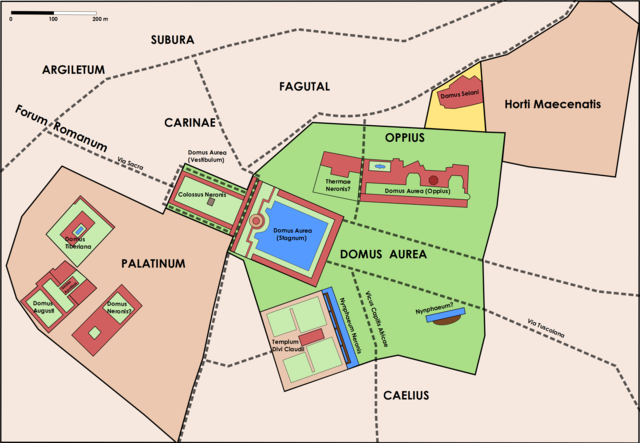
Domus Aurea (“The Golden House”)
-A controversial thing Nero does after a large fire in rome
-a showpiece that emphasize popular art trends in Nero’s eyes
-ignores mos marium (not roman)
64-68. AD
-displays Nero holding a victory on an orb and a branch
Nero with radiate crown
-displays Nero holding a victory on an orb and a branch
-Nero ends his own life when people start to hate him
-very unexpected
-no more julio-claudians
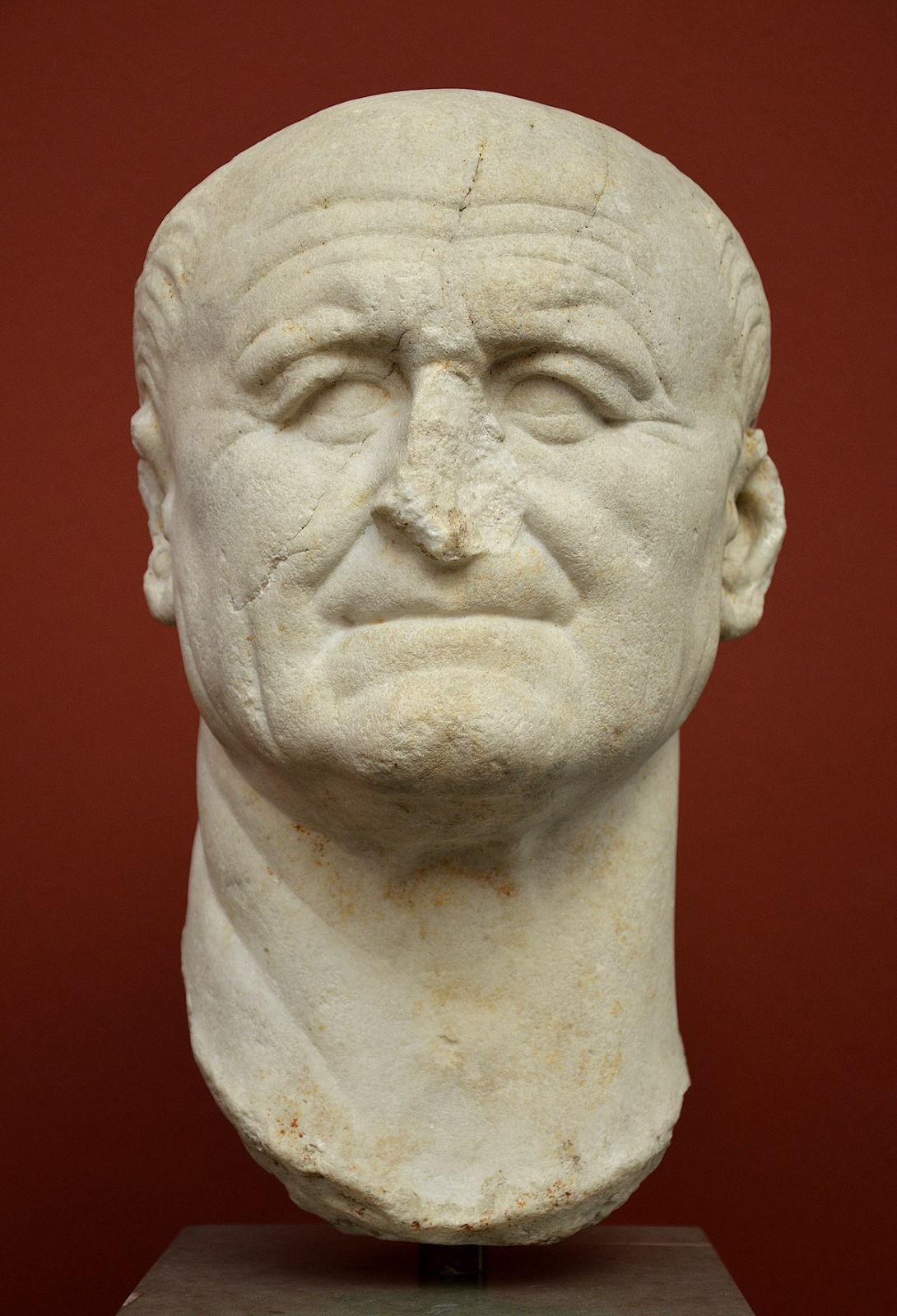
-Vespasian (AD 69-79)
-has military career
-becomes the new leader of Rome
-Violently suppressed the revolt of Godiva
-relatively unknown
-no fancy lineage
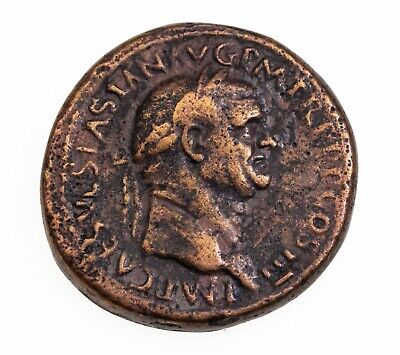
-Aureus of Vespasian (ca AD 71)
-very different face from the julio-claudian line (they are oval he is square)
-older than many julio-claudian rulers
-partial veristic style
-partial realistic style (unlike nero who was ‘sun-king’)
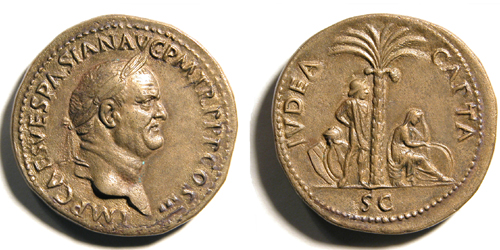
Judaea Capta after 73 AD
-a reminder of how important the army is
-reinforcement of success (suppress the Judaean war)

Rome- Templum Pacis (ca AD 75)
“Temple of peace”
Displays goods from jerusalem (Judaean War)
Displays massive art collection of Nero for people to enjoy)
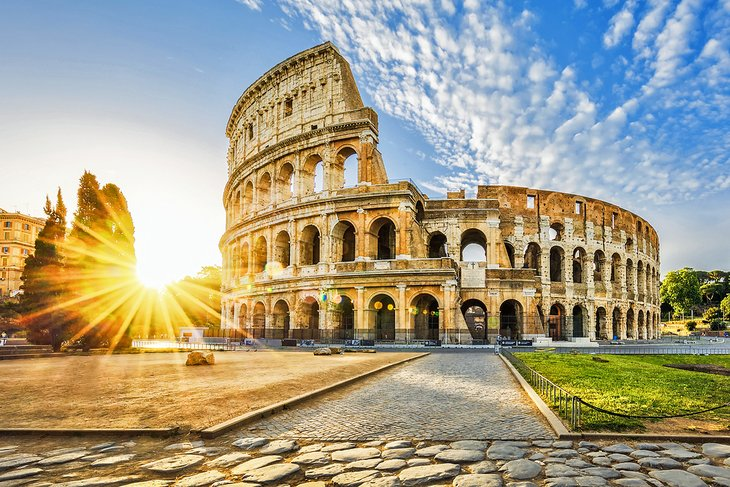
Flavians are responsible for “The Flavian amphitheater” (Colosseum) (72 AD)
-Orginal inscriptions indicate that this project was financed by Vespasian
-Legitimize the flavian claim to power (a generous patron)
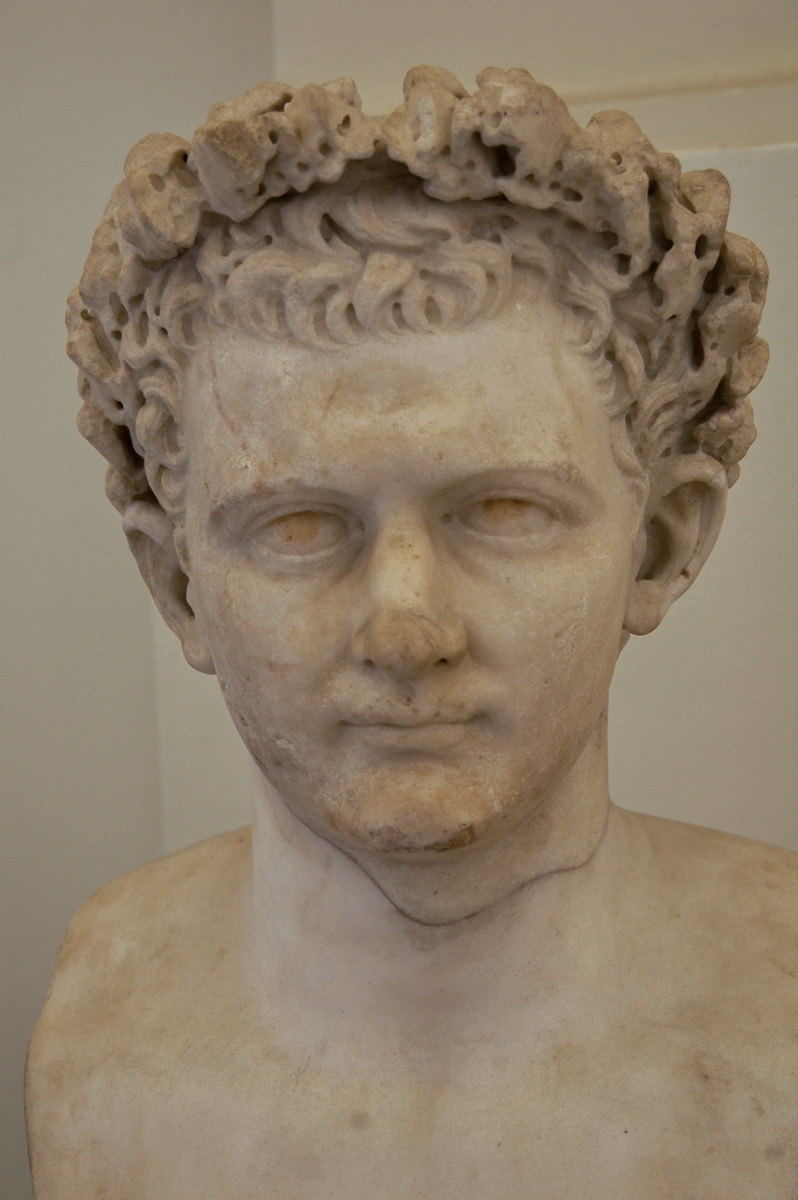
Domitian wearing the civic wreath (corona civica) (81-96) - naples
-Father was Vespasian and then his brother ruled
-feels inadequate (was too young to fight in the Judaean war)
-not a mentally stable person
-becomes self-indulgent and isolating
-keen to make people believe he is legitimate
-senate has to nominate you for corona civica
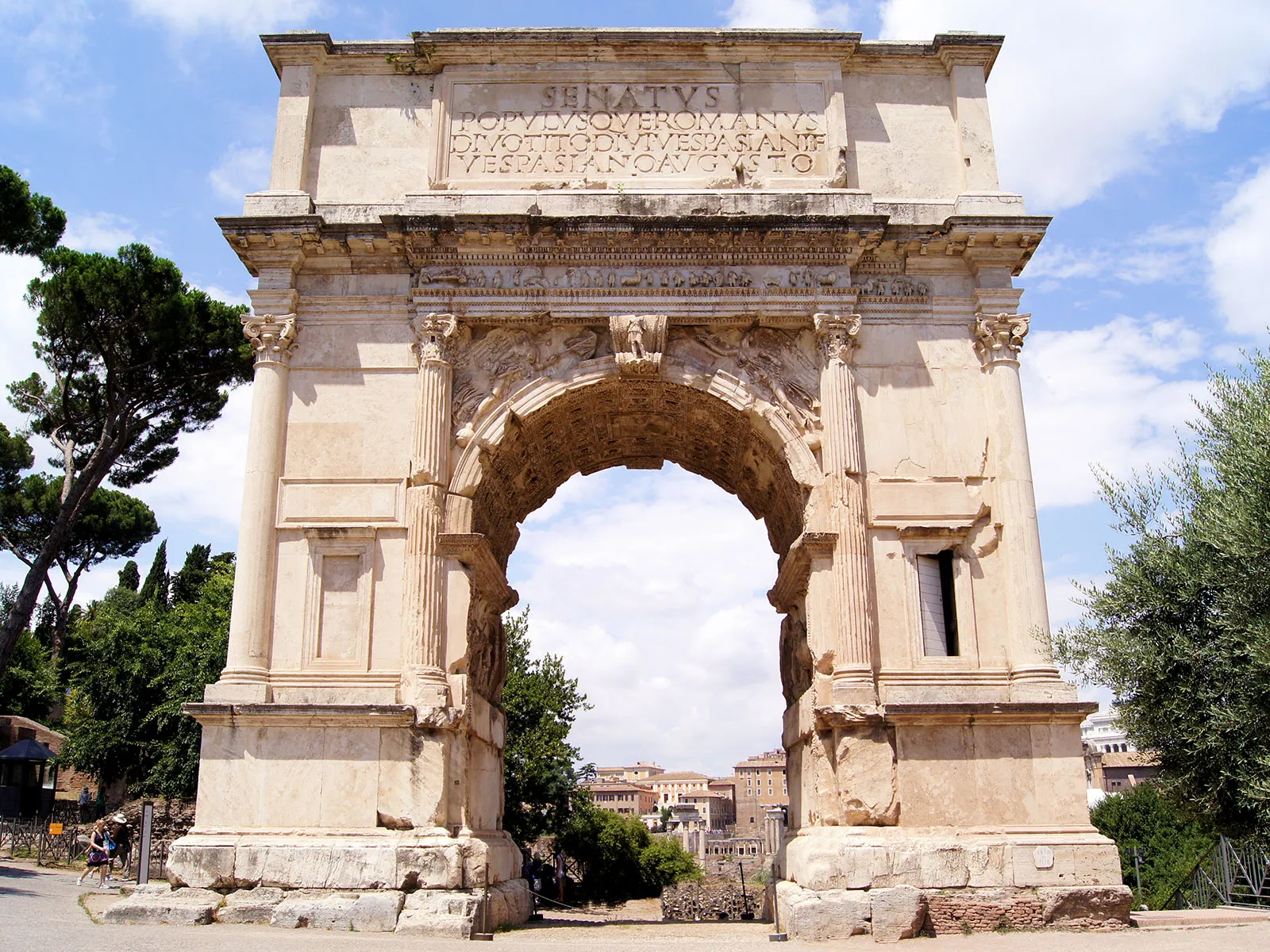
Rome- Arch of Titus (ca ad 81)
-Reconstruction under Giuseppe Valadier (1824)
-Rabirius as architect?
-Domitian wants to show people he is valid by drawing a connection to his family
-Top: attic inscription: doesn’t mention Domitian but mentions his older brother Titus
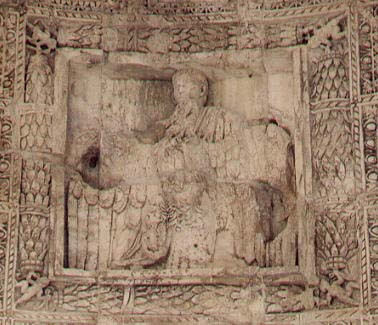
-Apotheosis of titus from soffit of the arch at Arch of Titus (ca ad 81)
-Titus becoming a god
-Domitian is related to a god

-Panel relief at the arch at Arch of Titus (ca ad 81)
-soldiers walking in the Flavian triumphal parade
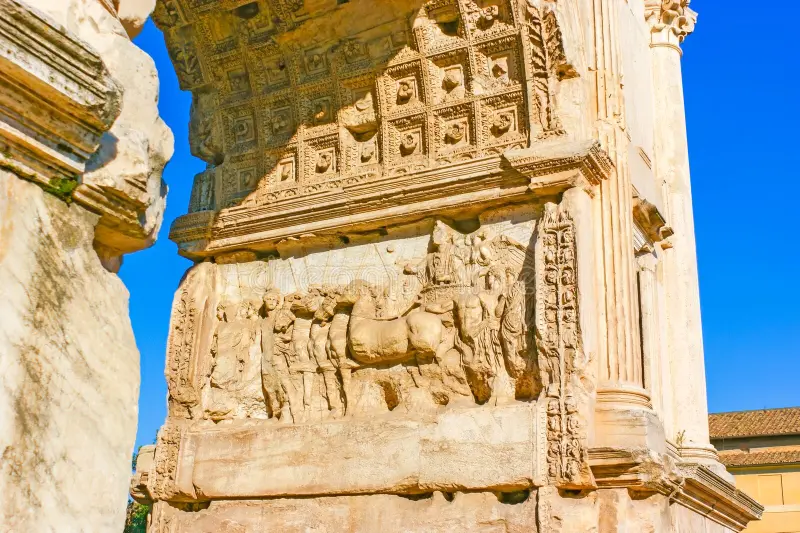
Triumphal panel relief of Titus at the arch at Arch of Titus (ca ad 81)
-Titus is celebrating triumph in a triumphal parade with goddess Victory
-Domitian is using the accomplishments of his brother to display his own victory
-direct not an alegory

[Musei Vaticani] (AD 83?) - Relief A: Perfectio (departure) for campaigns against the Chatti
-too complex for the reception of the message
-has war gods mars and minerva
-Goddess who is supporting Domitian in unexpected: An embodiment of Rome and samples from the greek depiction of the amazon warriors who are a women that fight like men
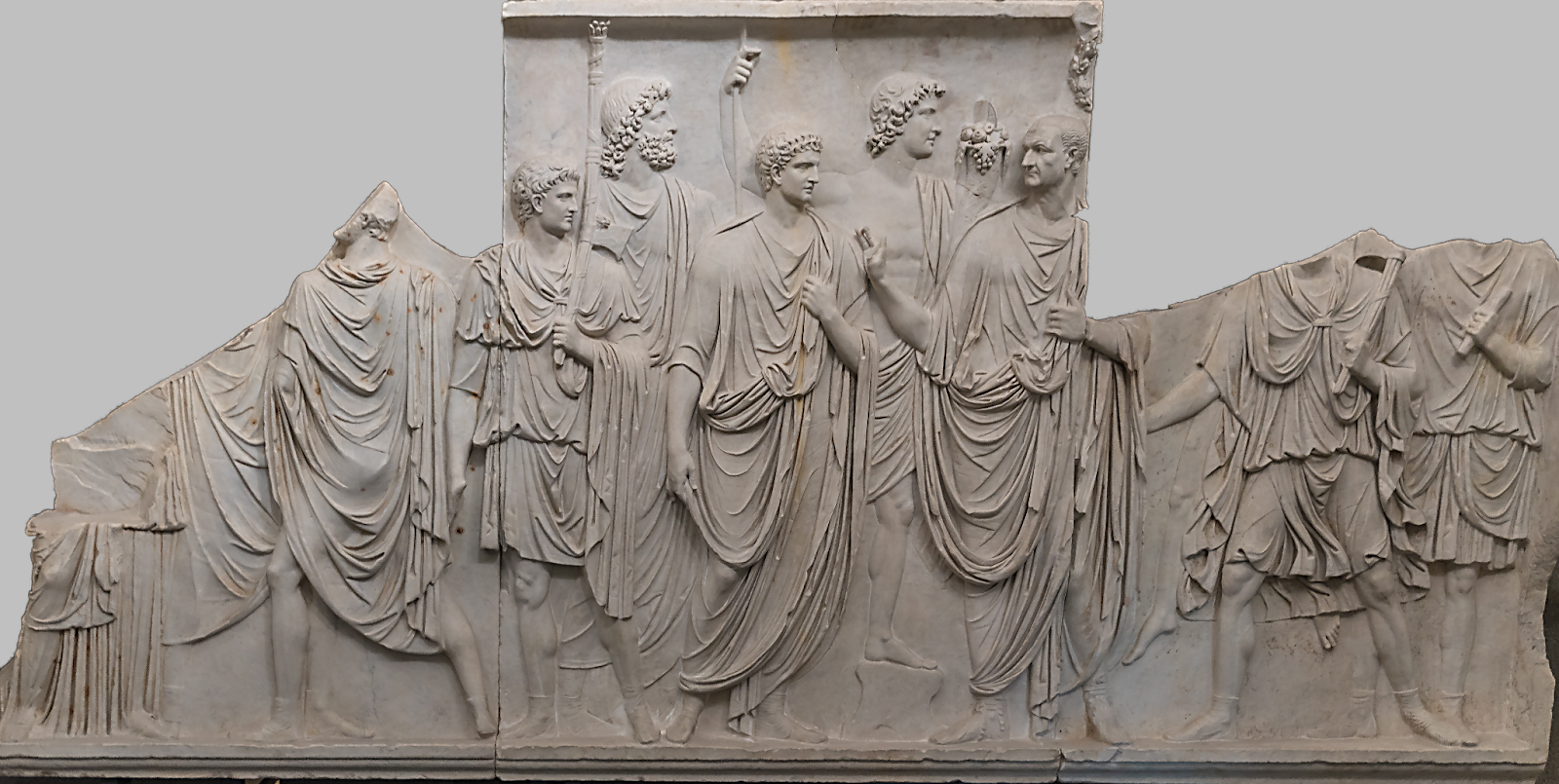
[Musei Vaticani] (AD 83?) - Relief B: Adventus - Post-69 reconciliation of Vespasian and Domitian
-related to Vespasian’s early reign
-reinforce the idea that Domitian is the son of Vespasian - becomes overkill

Marble funerary altar of Cominia Tyche; ca AD 90
-sculptural changeover of hair: more voluminous than julio-claudius woman
-more abstract
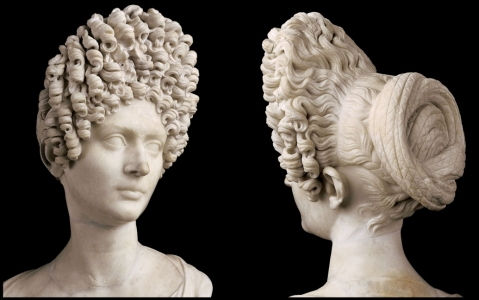
Bust of a Flavian woman (bust of Fonseca) (early 2 C AD)
-A more natural representation of the new flavian style of hair
-demonstrating more variation of hair
-Worthy of imitation
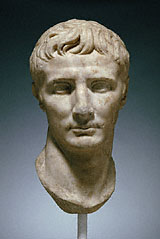
Portrait of Caligula reworked into Augustus (og AD 37-41) (reworked ca AD 41-54)
-Damnatio Memoriae: ‘condemnation of memory’
-the state says you are now an unperson and cancels your name and image to erase
you from society
-law meets art
-portraiture is serious
-didn’t want to completely destroy marble statues
-messes with proportions
-head looks squashed
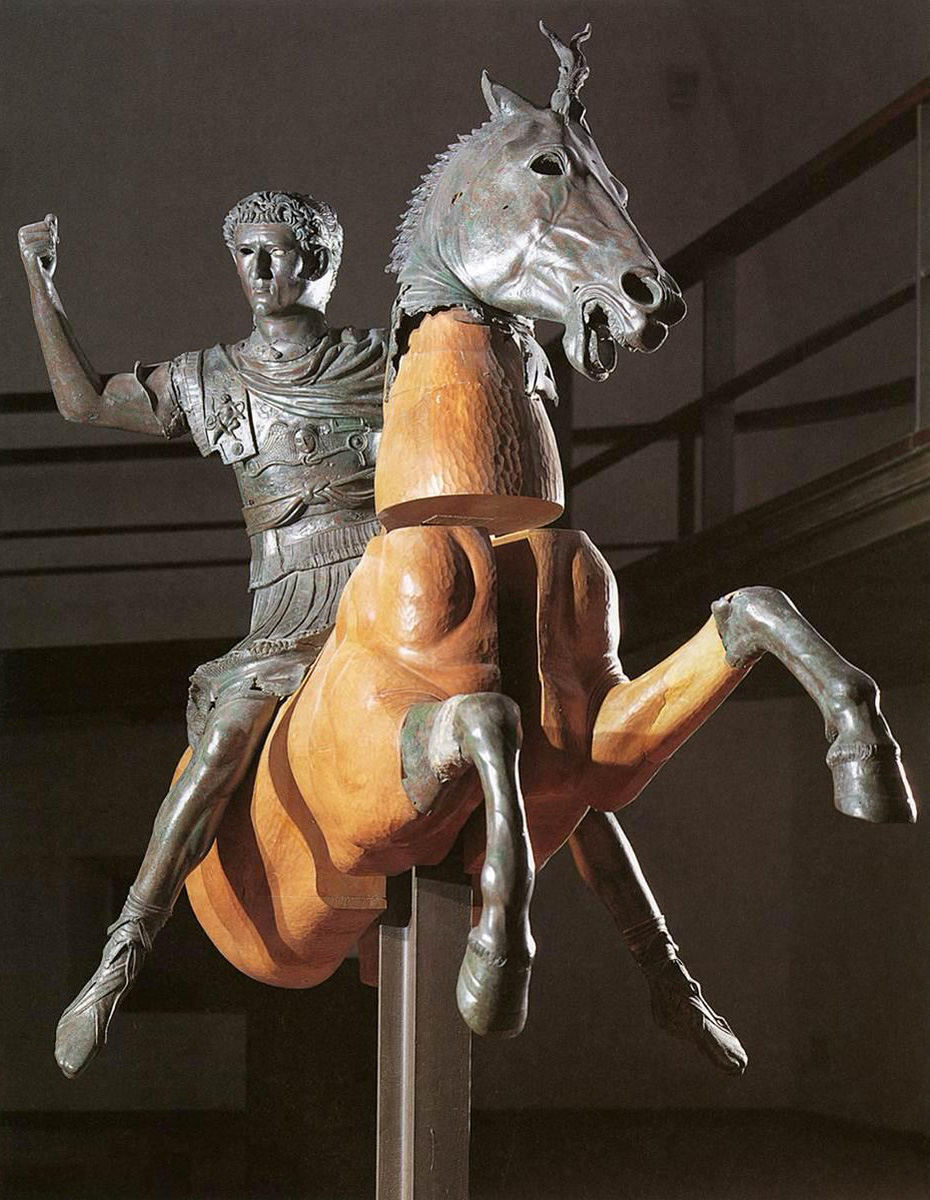
Equestrian Statue of Domitian, his face is later replaced with that of his successor Nerva, Sacellum of the Augustus Misenum, AD 95
-strange proportions due to replacing face
-Damnatio Memoriae: ‘condemnation of memory’
-the state says you are now an unperson and cancels your name and image to erase
you from society
-law meets art
-asks ‘does this make you forget the previous person, or remember them more?’
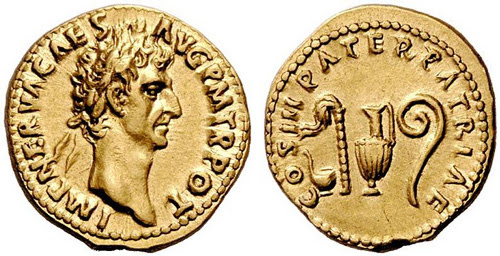
Marcus Cocceius Nerva born 8 Nov AD 30
-promised to become ruler as long as he chooses a good successor
-chooses Trajan
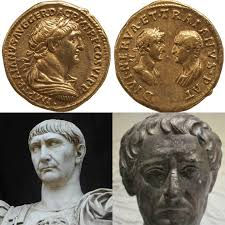
Marcus Ulpius Traianus (AD 98-117)
-great soldier
-adopted by Nerva
-isn’t difficult to look good because Domitian was so bad
-trajan and Nerva to demonstrate familial connection and being the pious son

-Bust of Trajan in the British museum (AD 108-117)
-Decennalia = 10-year anniversary type
-demonstrate Trajan as a hard working great ruler
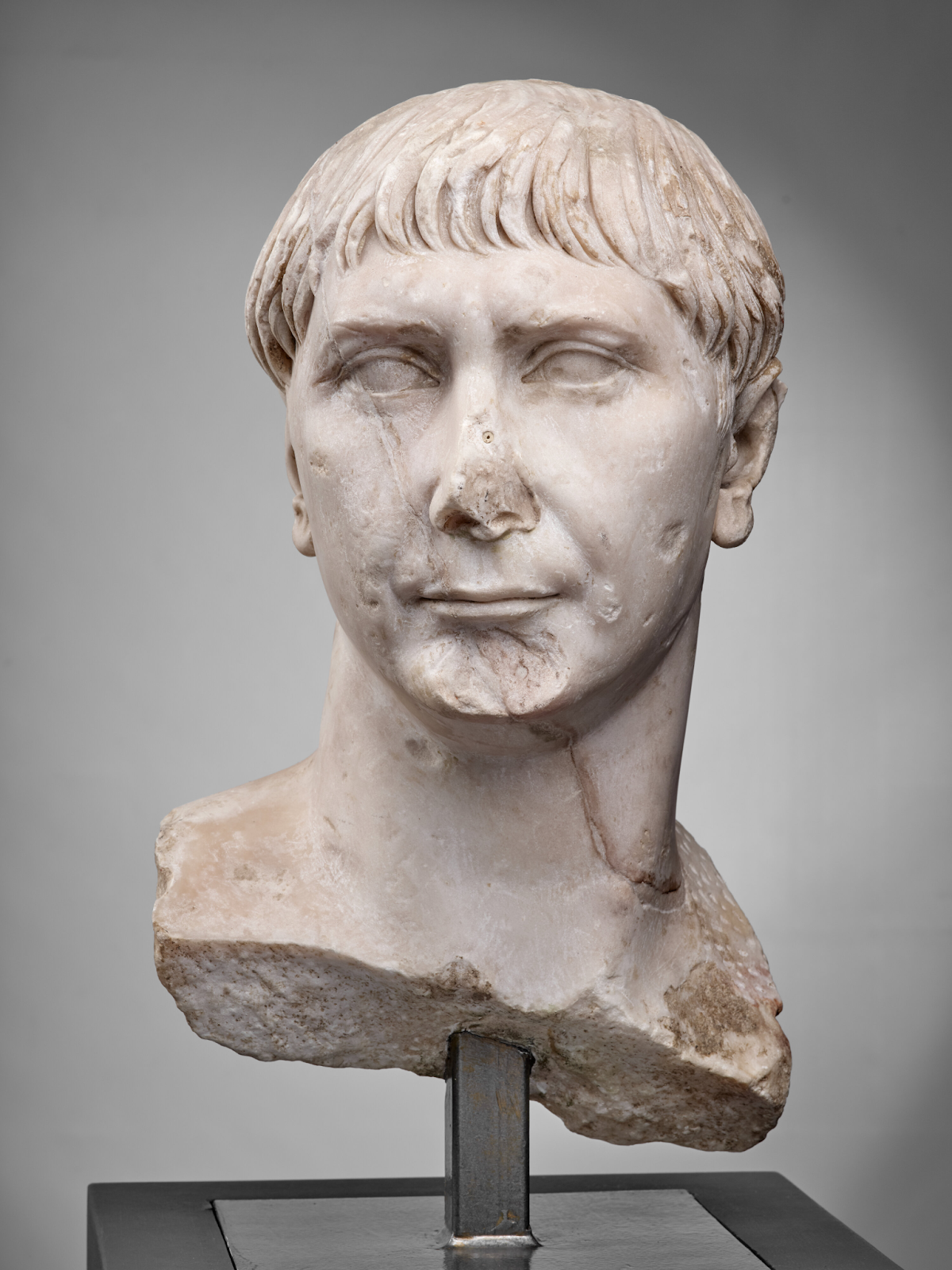
Chiragan Roman Villa - Bust of Trajan (ca AD 108)
-makes him look sound
-attach the Augustan notion that a good emperor is a good citizen who is a good patron - generous
-hair looks like he is a hard working soldier
-highlight the virtuality of the person but also remind people of past rulers who were admired

Plotina, Wife of Trajan (ca AD 110-120)
-updo is similar to flavian women - voluminous
-less abstract and complex
-less worked
-continued use of added hair

Hadrian (AD 117-138)
-period of adoptive succession
-trajan trains him to be the first citizen
-Trajan’s image speaks to the soldiers
-Hadrain speaks to the cultivated sophisticate
-big fan of greek culture
-Greaculus: little greekling - a mocking nickname
-has a beard to show his affinity for greekness

Adoptio denarius struck 117
-shows that him and Trajan are aligned to reinsure the army

Bronze Bust of Hadrian, found at the Camp of the 6th Roman Legion in Tel Shalem
-a lot of patronage for Hadrian
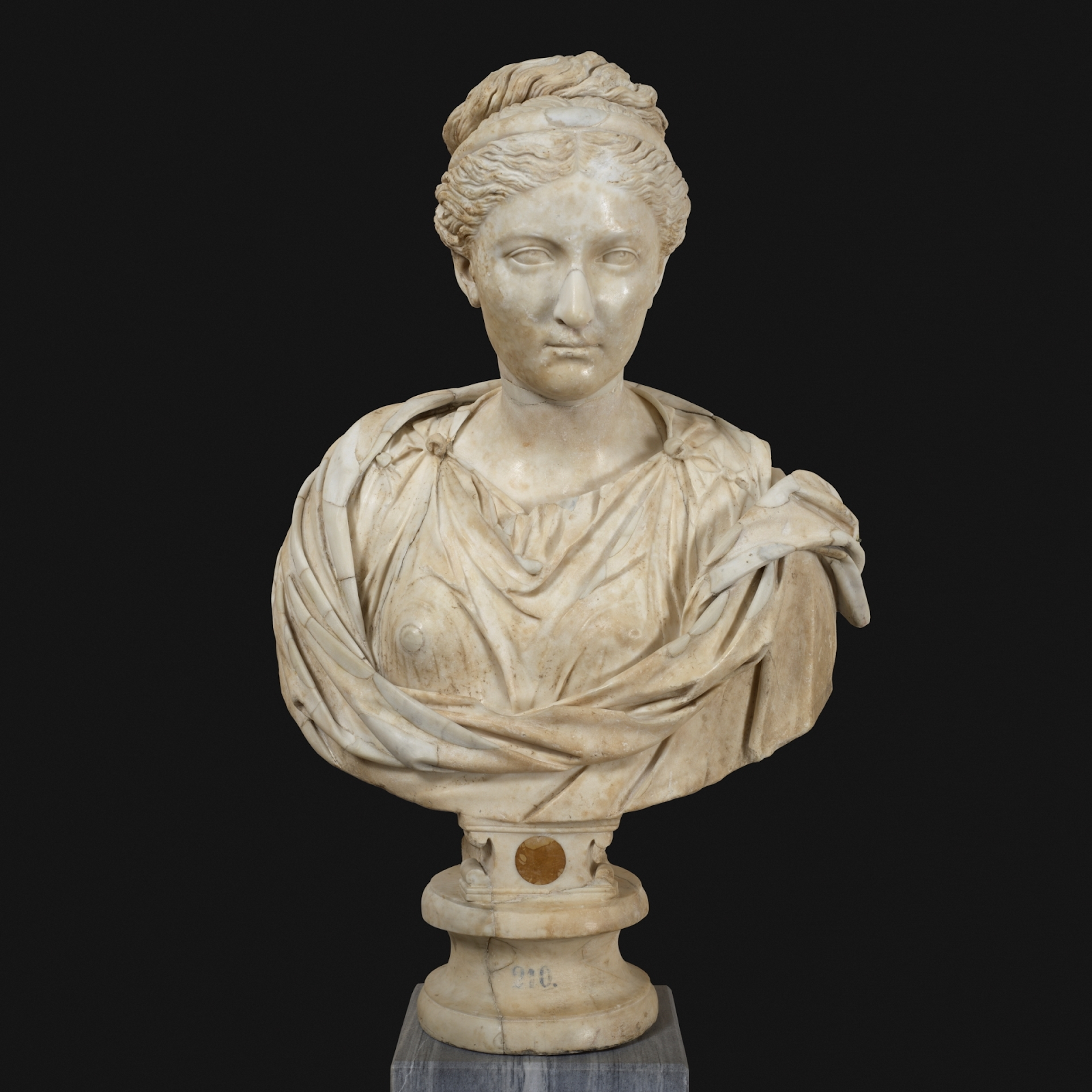
Vibia Sabina (wife of Hadrian) vix 83-136/7
-No longer any flavian features
-more inspired by classicalism
-idealistic
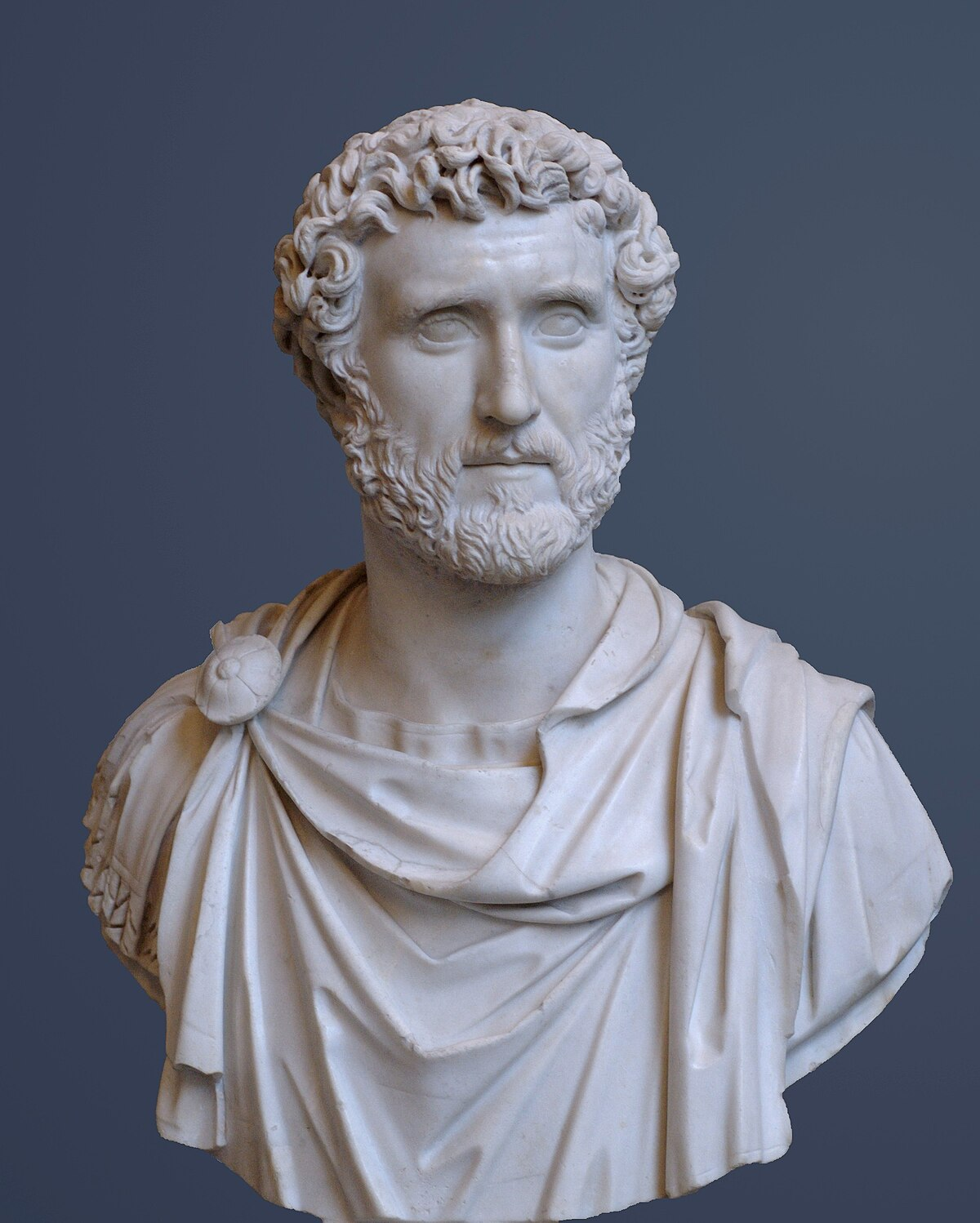
Antoninus Pius (r. 138-161)
-comes to power in boring times
-born in suburbs of rome and never leave Italy - opposite of Hadrian
-continues portrait ideology of Hadrian
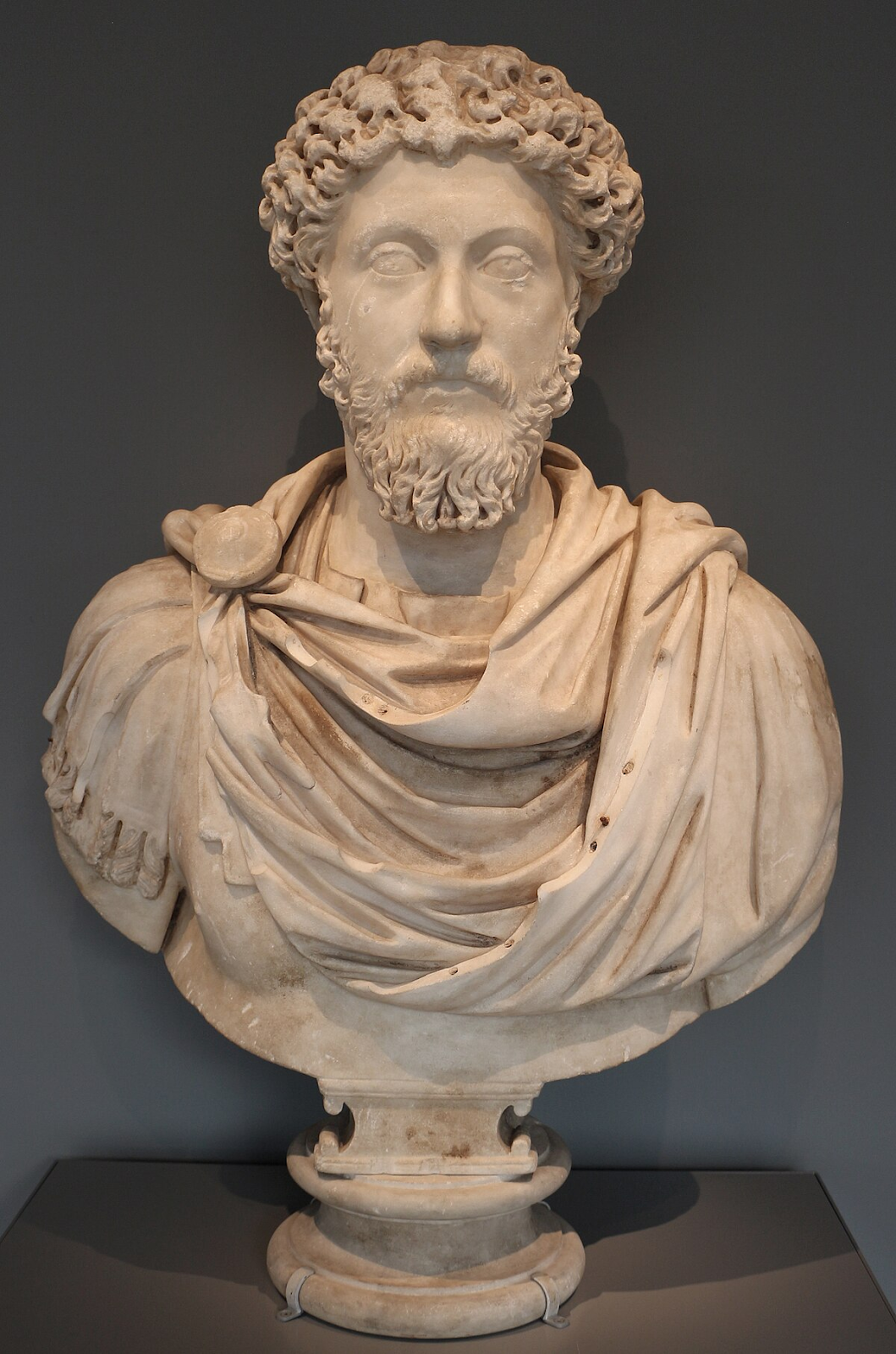
Marcus Aurelius (r. 161-180)
-raised as perfect prince
-born to be a philosopher emperor
-Similar to octavian - was painted in imperial art at a young age
-does not go for adoptive succession

M. Aurelius - equestrian statue ca AD 176 ?
-around 22 of the equestrian monument
-only one that survives because it is misidentified
-an icon of the city of Rome
-image program is a construct
-what do you want the view to see - the state program believes that the actual identity is not important but instead to view his official virtues
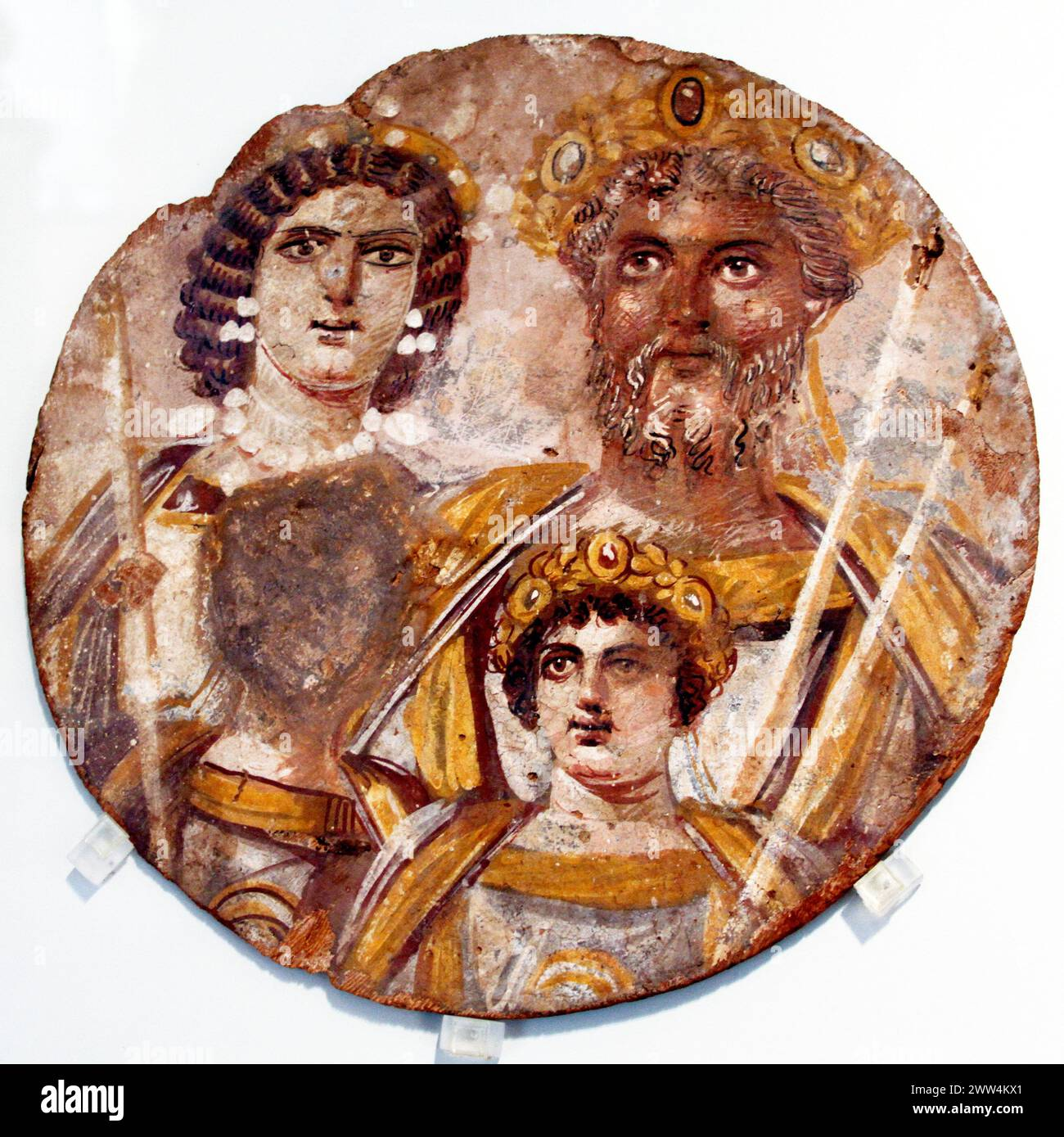
Fayum: severan family portrait ca AD 200
-Damnatio Memoriae: ‘condemnation of memory’
-the state says you are now an unperson and cancels your name and image to erase
you from society
-law meets art
-portraiture is serious
also
the woman is Julia Domna
mater castrorum (mother of the military camps)
-she is the mother of the empire
-Julia’s image is an anchor for her husbands and sons’ power
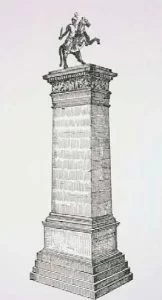
Aemilius Paullus’ monument at delphi 167 BC
-monument is permanent
-most of the art is painted or built of temporary materials
-asks “what if the audience isn’t just the immediate one, but what if it is everyone for all of time?”
-very roman, very direct

So called altar of Domitius Ahenobarbus at rome
-Southern Campus Martius 1st BC
-important early point in military commemoration
-a sacrocivic scene
-various kinds of figures that are legible
-recognizable images
-want you audience to understand the image
-civic scenes and sacrifice sense
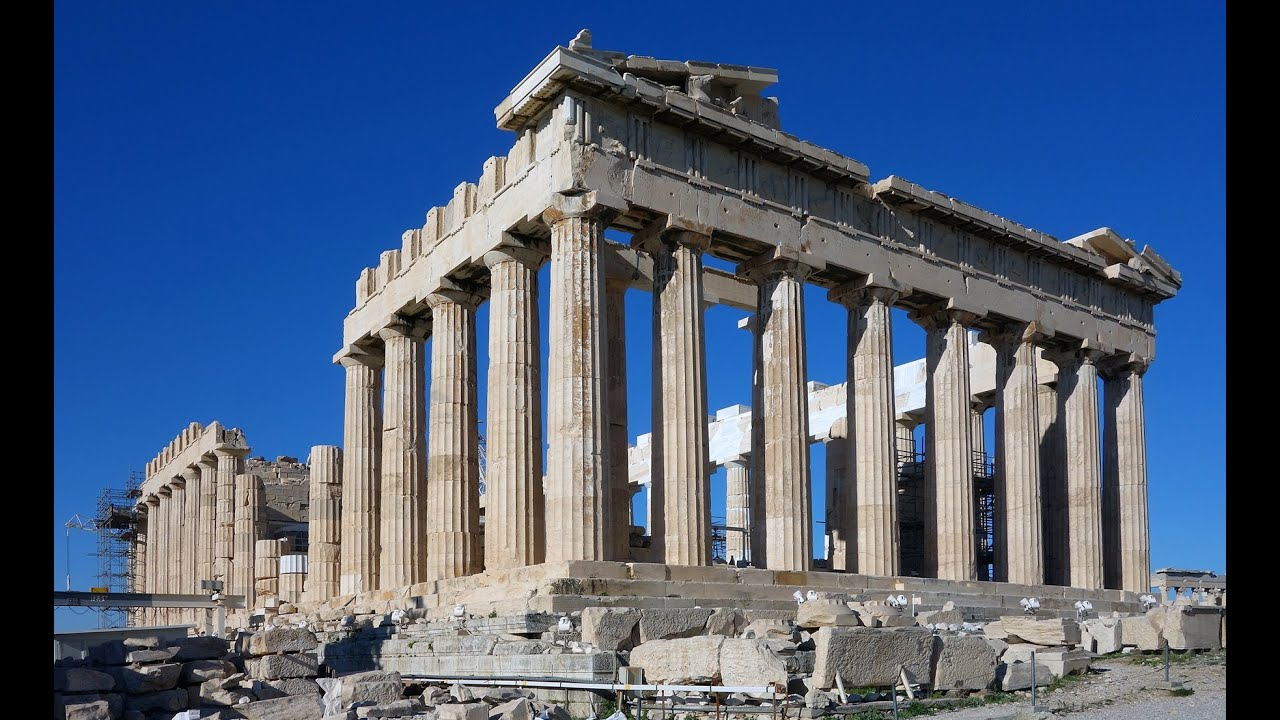
Parthenon (447-432 BC) Athens
-the greek program relies on allegory (picture with a hidden meaning)
-Augustus uses this idea in the Tellus Portrait in the Ara Pacis

Ad Locutio “address given by a general usually to massed soldiers”
-the visuals make nero appear good

Aphrodisias (Caria) - Sebasteion (1st C AD)
-Sebasteion means “beloved by the gods”
-A monument for not just augustus, but the idea of augustus
-show that someone is looking at the state’s image program
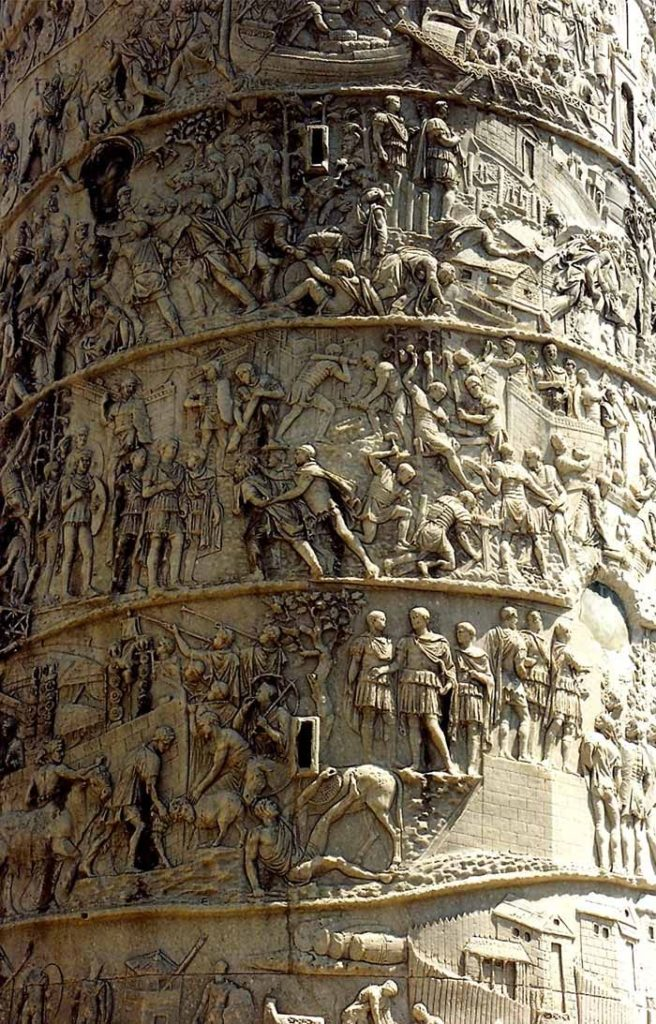
Column of trajan - frieze AD 101/102, 105-107
-helical frieze
-continuous narrative
-made of great quality marble
-things are as you expect them to be
-who is roman vs who isn't
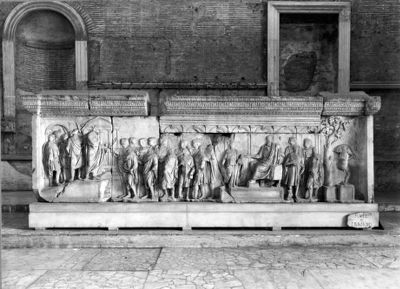
Anaglypha Traiani or Plutei Traiani (2 C AD [end of trajan beginning of hadrian])
-still a need for mondaine art - state cancelation of tax debts
-there is a setting in the art which possibly helps with meaningfulness
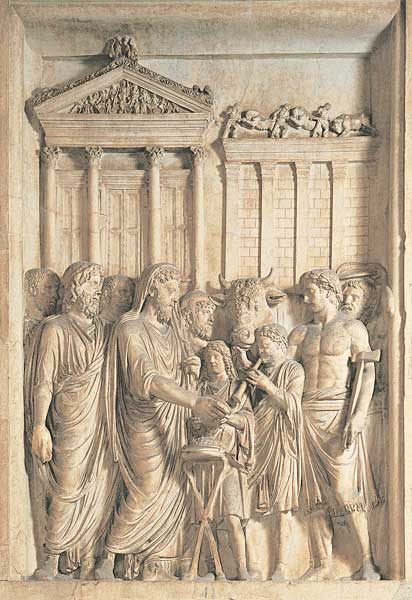
Panels Reliefs of Marcus Aurelius (ca 176)
-most developed examples of the Emperor doing what you think he should be doing
-Aurelius is at capitoline hill doing a sacrifice
-an engineered seen with a balance of the historical and abstract for the viewer to get the message
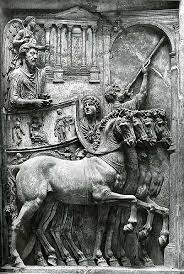
The aurelian triumph panel (2nd C AD)
-triumphing general is on the parade route
-doing what you think he should do
-expected duty
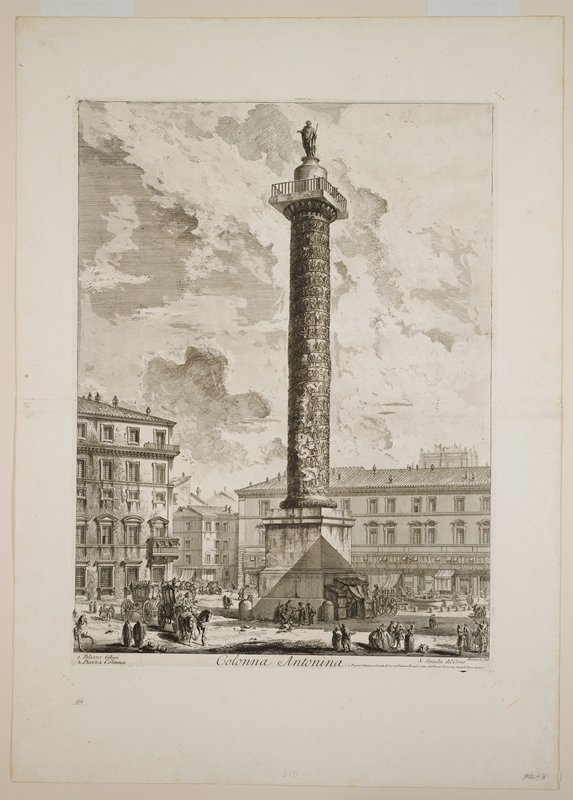
Collunna Antonina (1D 180)
-Commemorates Marcus’ triumph over Marcomanni
-not as good as column of Trajan
-not executed as well (bad math with a looser helix)
-still a need for this type of media communication
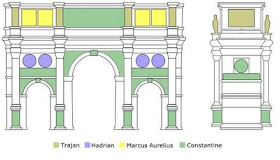
Rome - arch of constantine; 312-315 AD
-Constantine came to power after civil war
-a new monument where constantine is demonstrating himself as the savior of the state
-look at past great leaders
-any positive feelings you have for them will transfer to him
-reused sculptural elements of past programs
-inscription at the top tells you who Constantine is and why he is good
-this expects a lot of the viewer
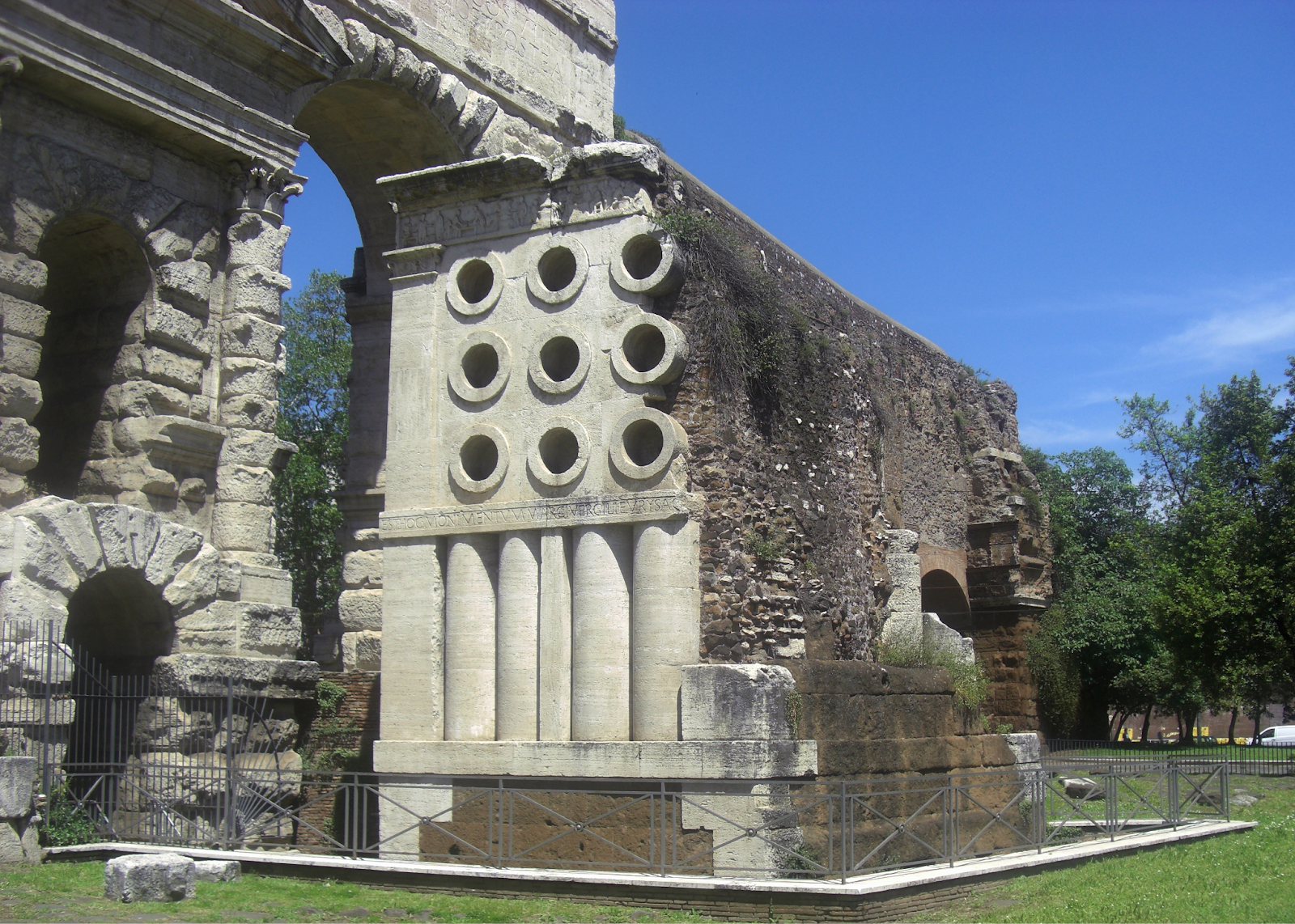
Rome: Tomb of Eurysaces (late 1 c BC)
-“This is the monument of Marcus Vergilius Eurysaces the baker, a contractor…”
-may have a state contract to bake bread for army, which is why he has money for land and tomb
-the funeral space is a great way to see identity statements from non-state actors
-unusually well preserved
-idiosyncratic (peculiar) form
-some believe tubes are vessels for the baker
-some believe the images point to Eurysaces as an elite among the workers, similar to the real elites

L’Arringatore (ca 80 BC)
-position indicates he is speaking in the forum square
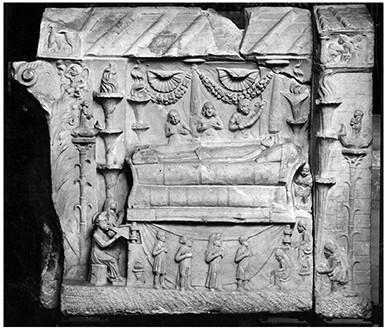
Tomb of the Haterii (late 1st C AD)
Rome- Via Labicana
-left: a scene of mourning
-right: ancestors
-private industry
-state-adjacent themes to portray identity
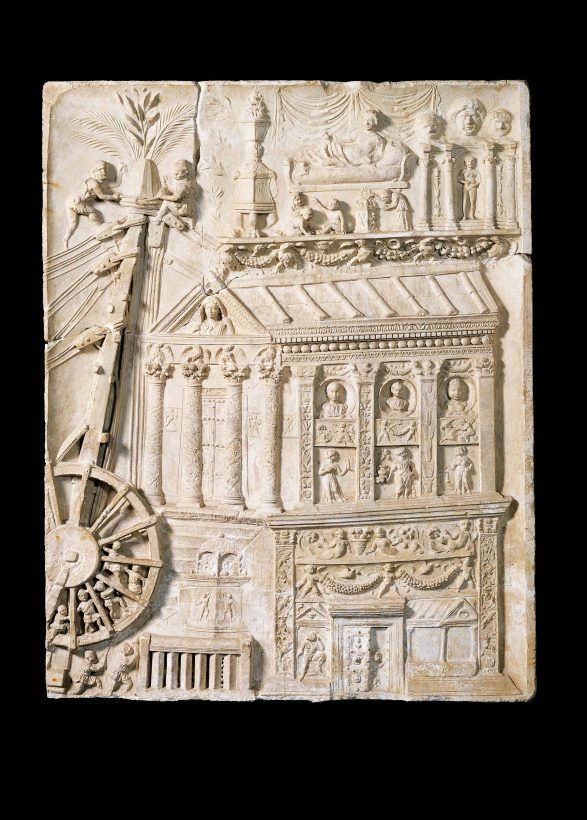
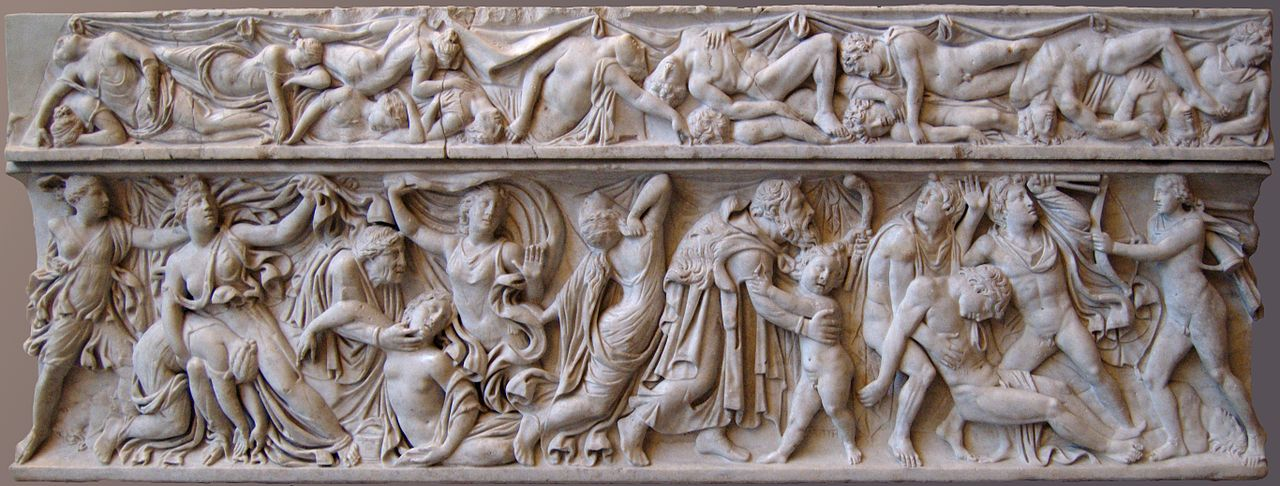
Sarcophagus with scene of the Niobids (Ca AD 160-170) via Appia
-Niobids: children that apollo kills
- greek mythology: more sophisticated

The Labors of Hercules ca 170 AD
- greek mythology: more sophisticate
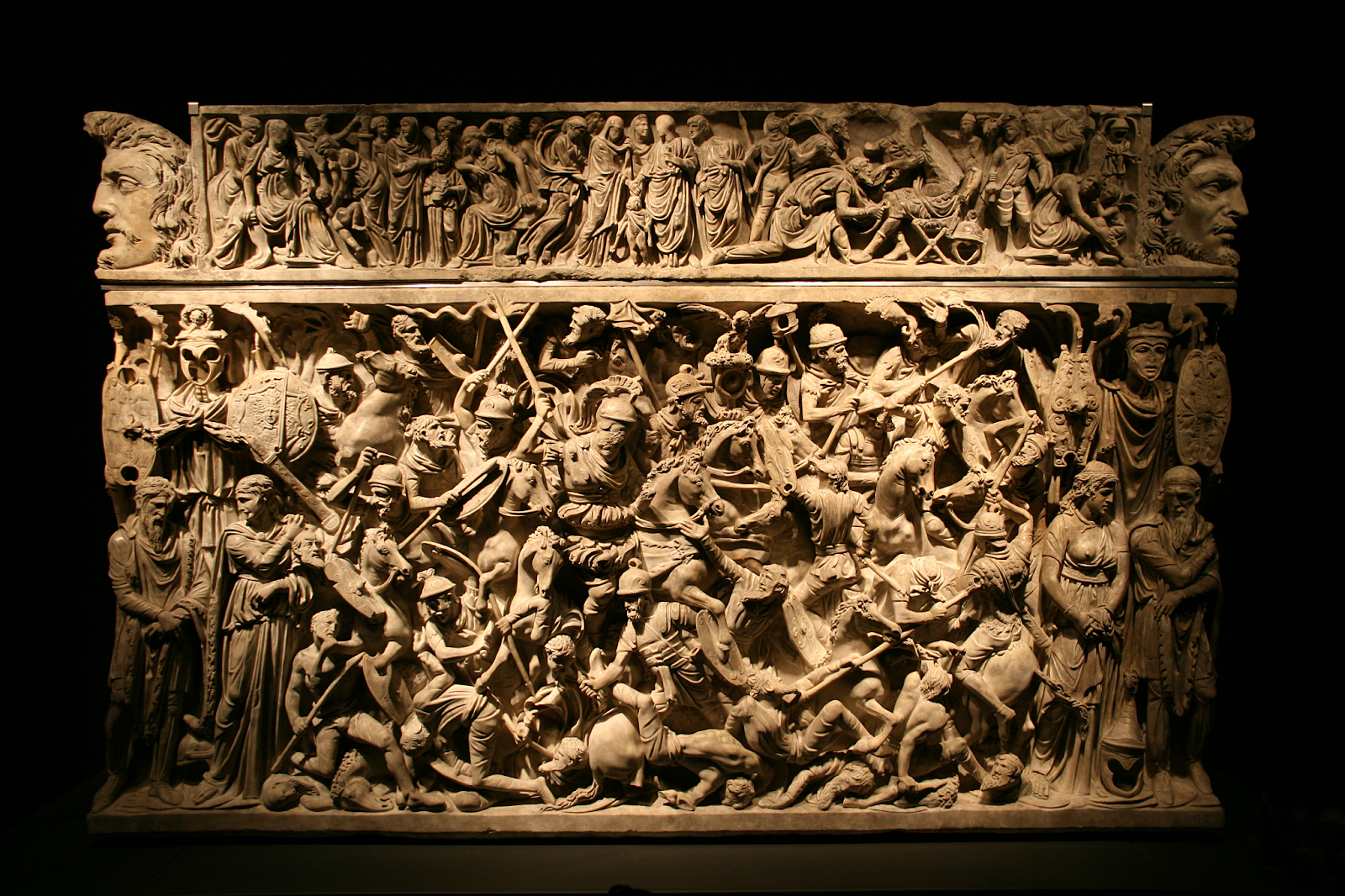
Portonaccio Battle Sarcophagus (ca 180-190 AD) - Portonaccio
-direct geographical impulse
-seems unfinished
-very complex work
-layered composition
-main person’s face seems unfinished
-was this made with someone specific in mind or just if someone comes in
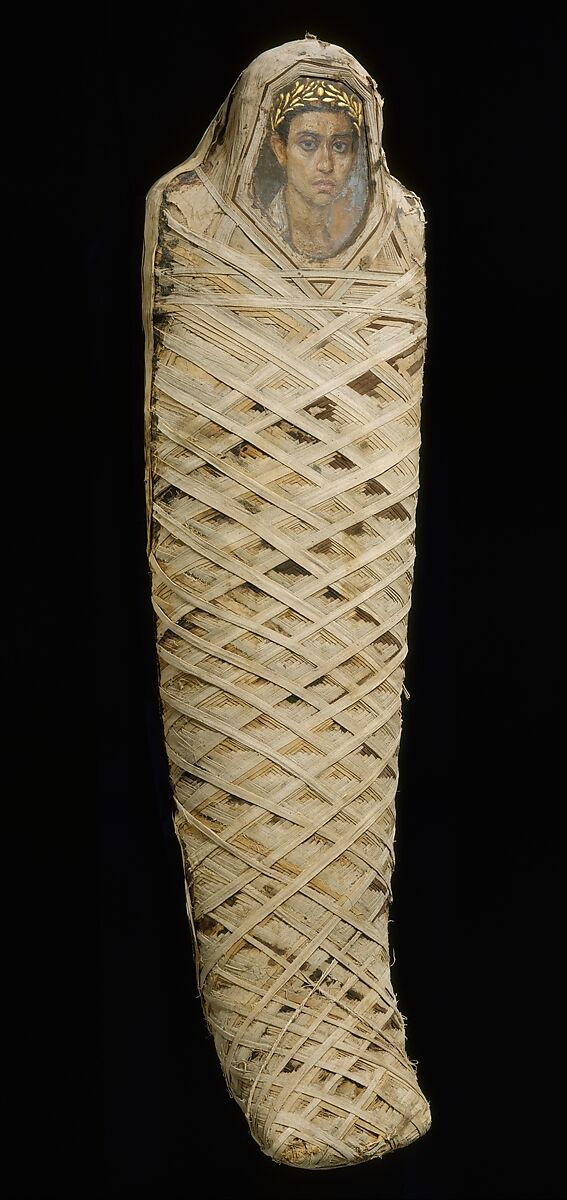
-Hawara - Mummy with an Inserted panel portrait of a youth (ca. AD 80-100)
-are they made during the lifetime and reused or are the made at the time of death
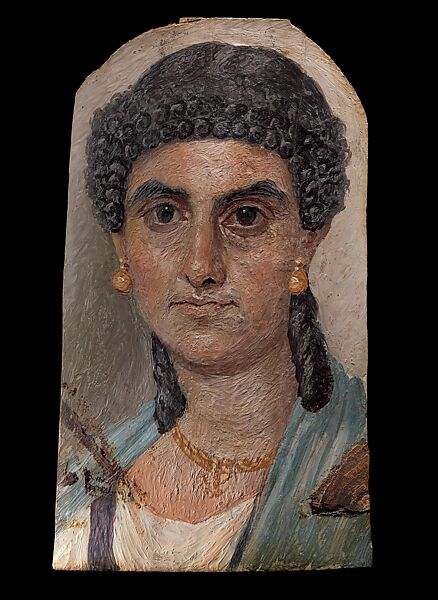
Panel Painting of a woman in a blue mantle Neronian, AD 54-68
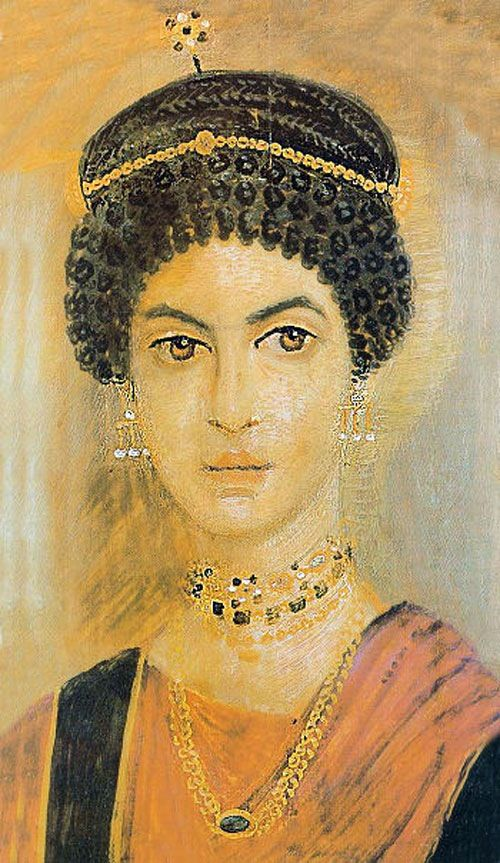
The Jewelry Girl
-private, not of state interest
-for upper middle class and above’
what?

Portus - Isola Sacra necropolis
-working class
-mostly cremation tombs

Portus - Isola Sacra - tomb 29 (late 2nd C AD)
-Plaques ar mounted on tombs
-they are focused on trades

Funerary relief of decorators at work (2nd c AD sens museum)
-the material turn: being interested in not just the end project but the steps to get there
-roman wall art is challenging
-bottom person is preparing the layer you apply first (plaster)
-top right is applying to wall in multiple layers (top layer is smoothest)
-top left is applying paint to wet plaster (fresco technique [fresh])
-fresco pieces last very long
-most pigments are naturally sourced making them more expensive so more expensive colors are indicators of status